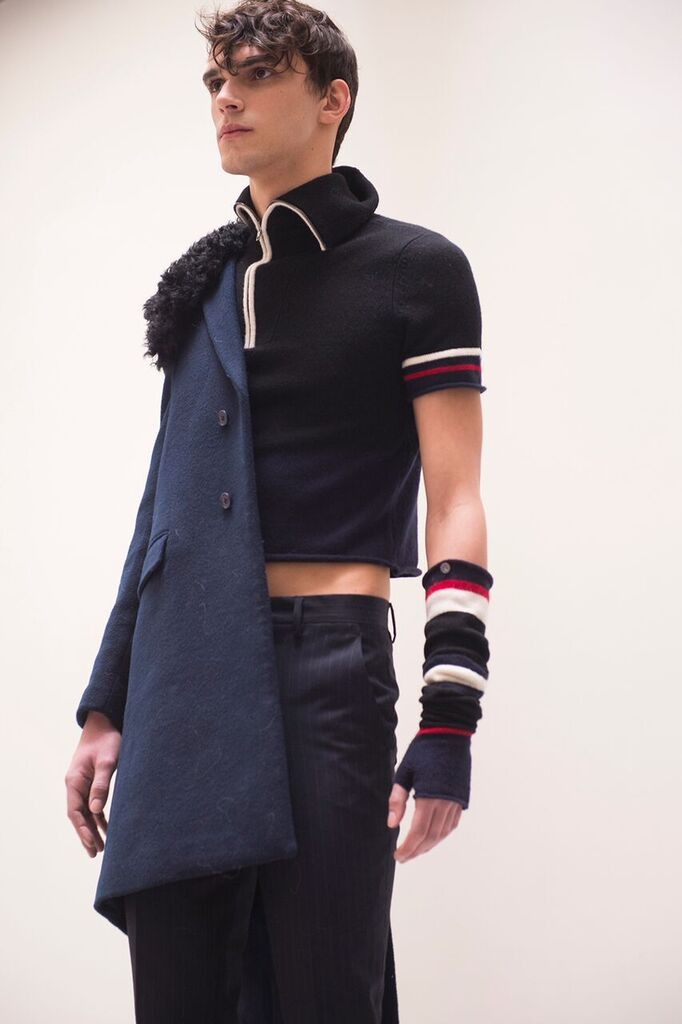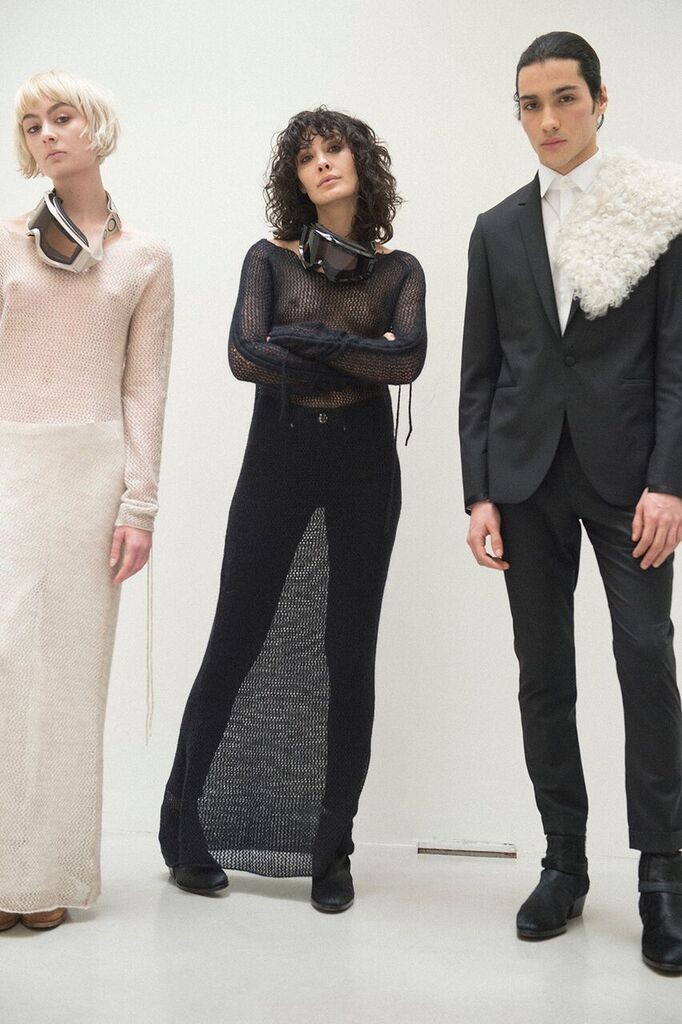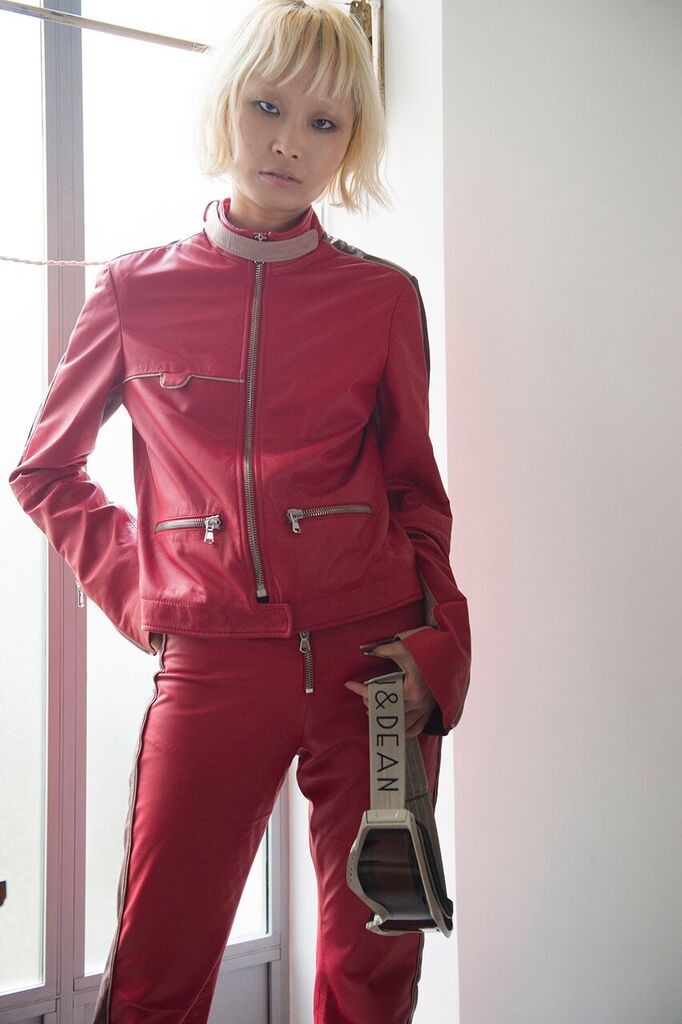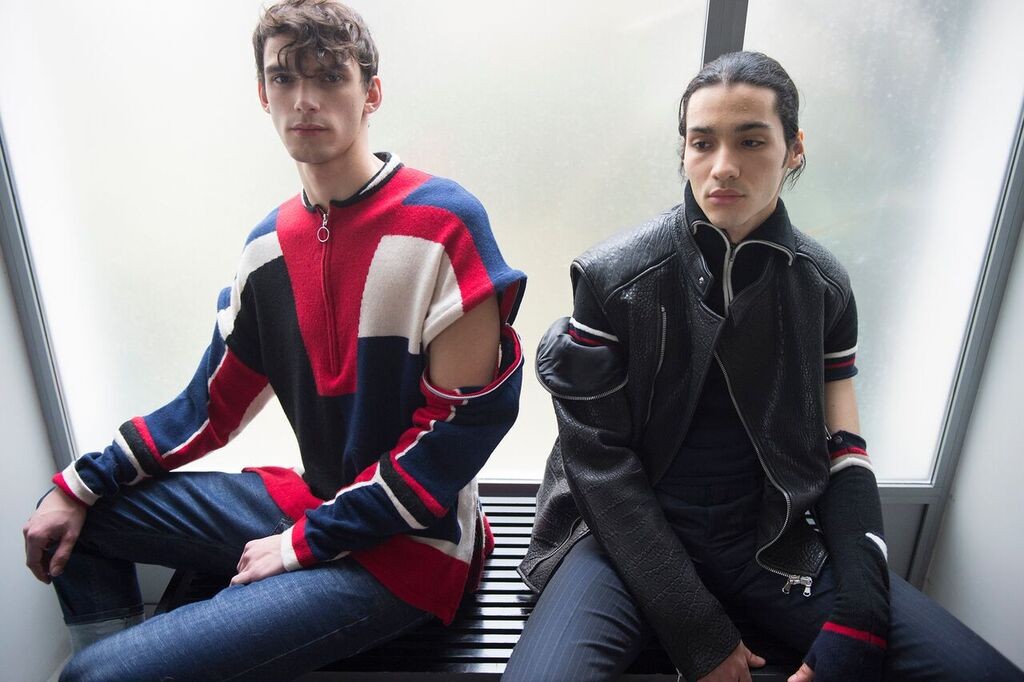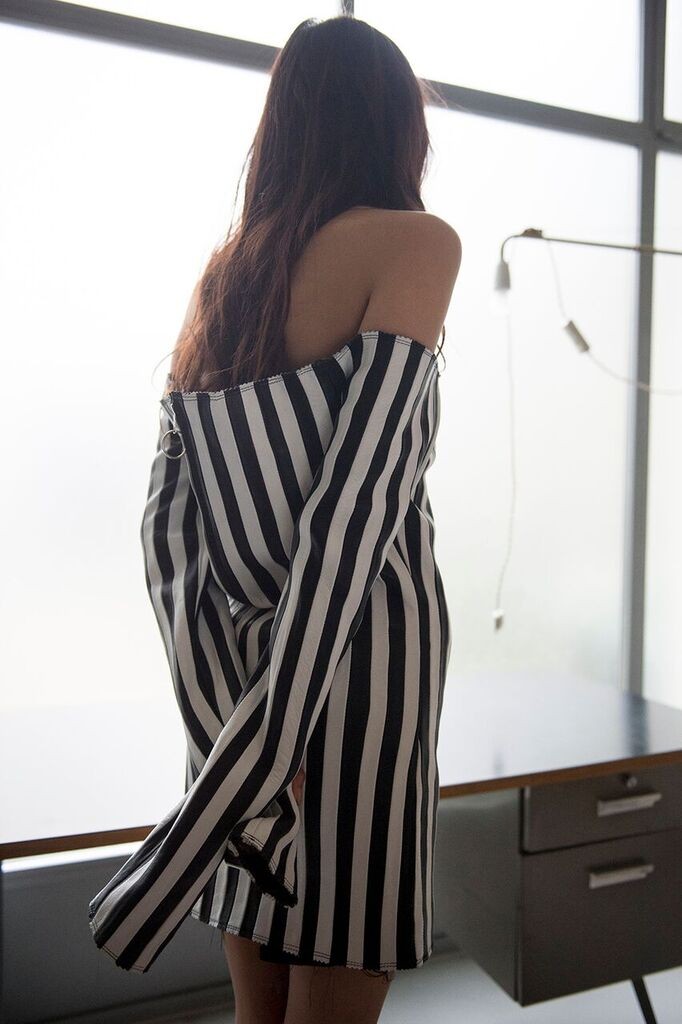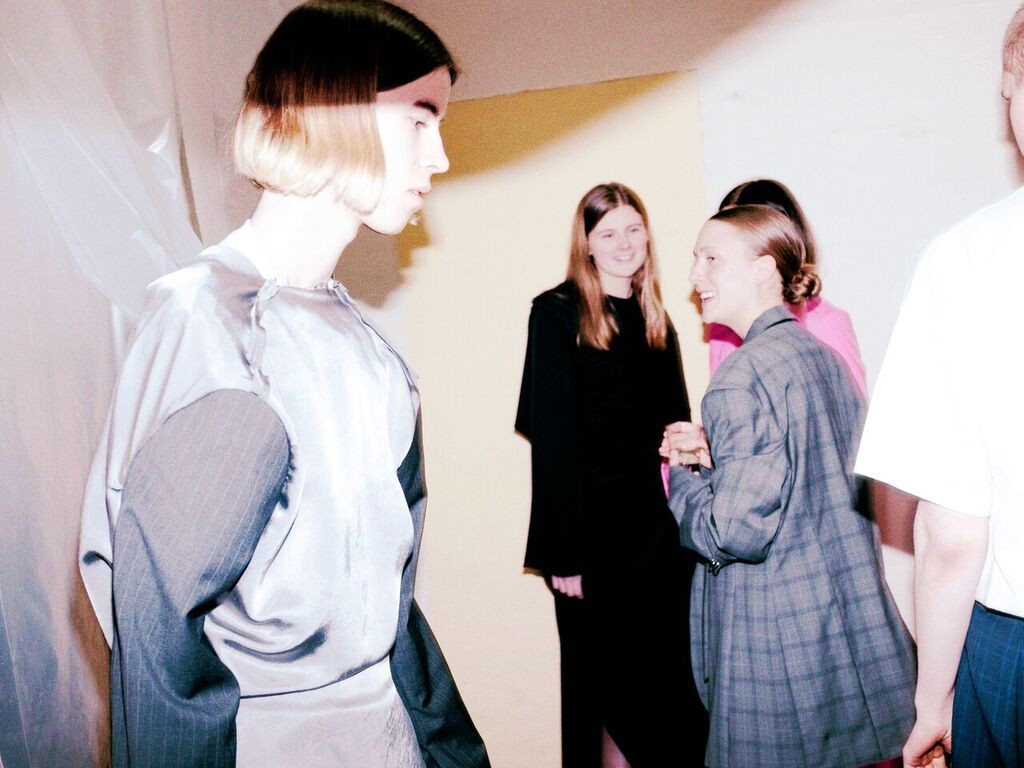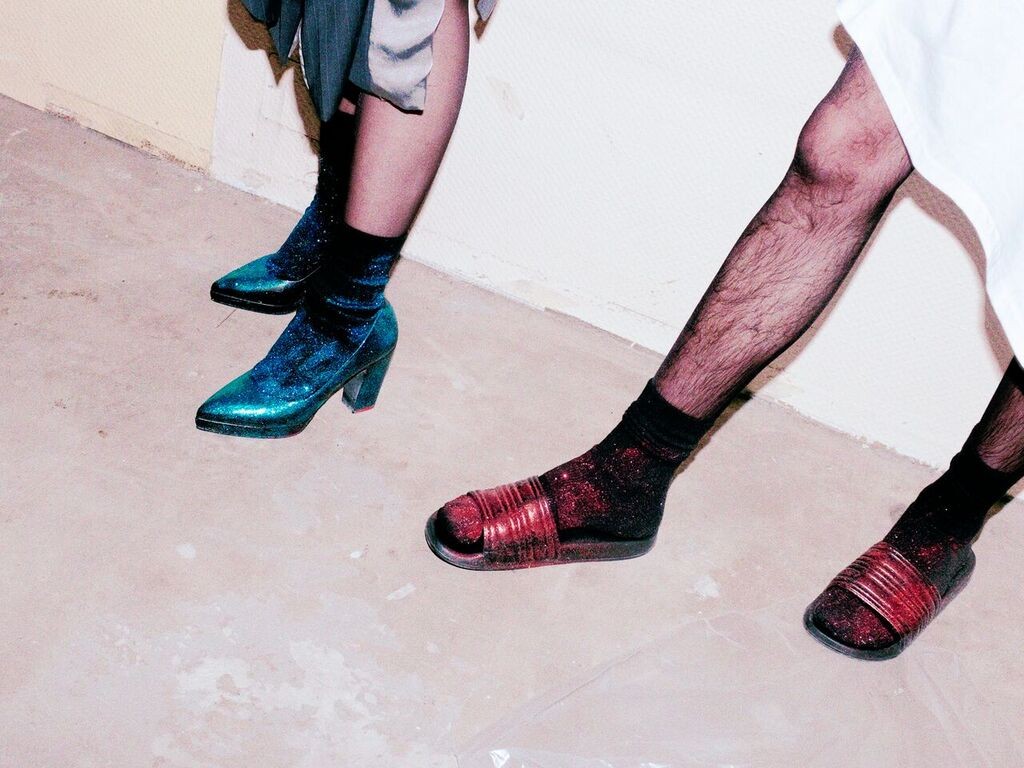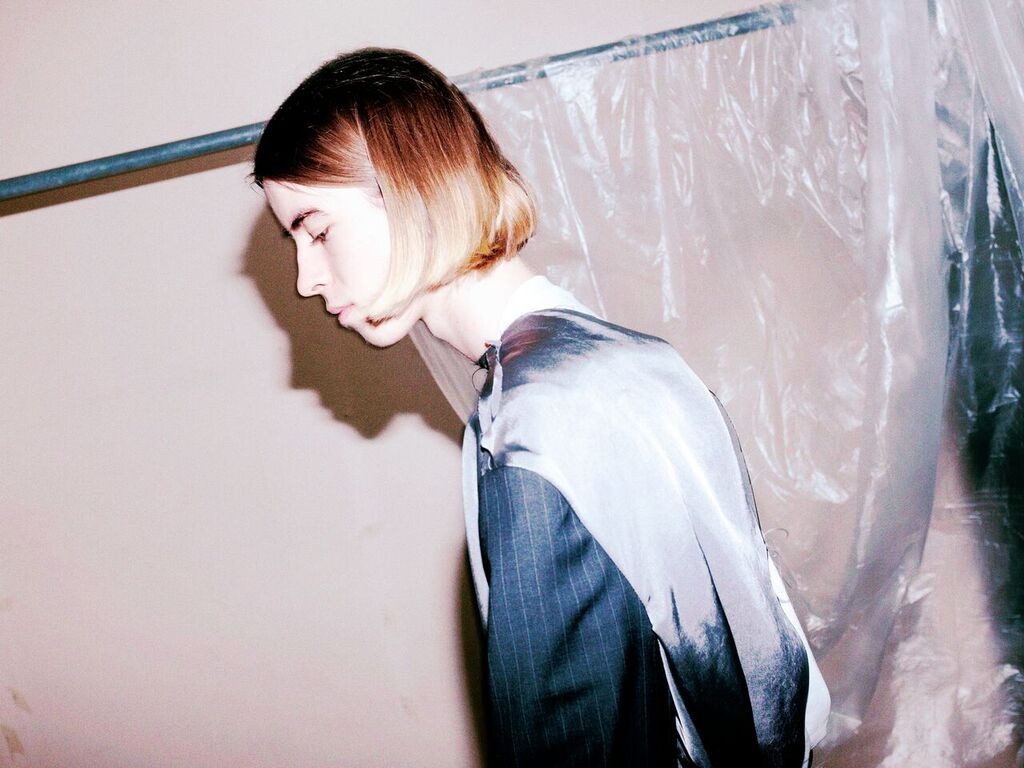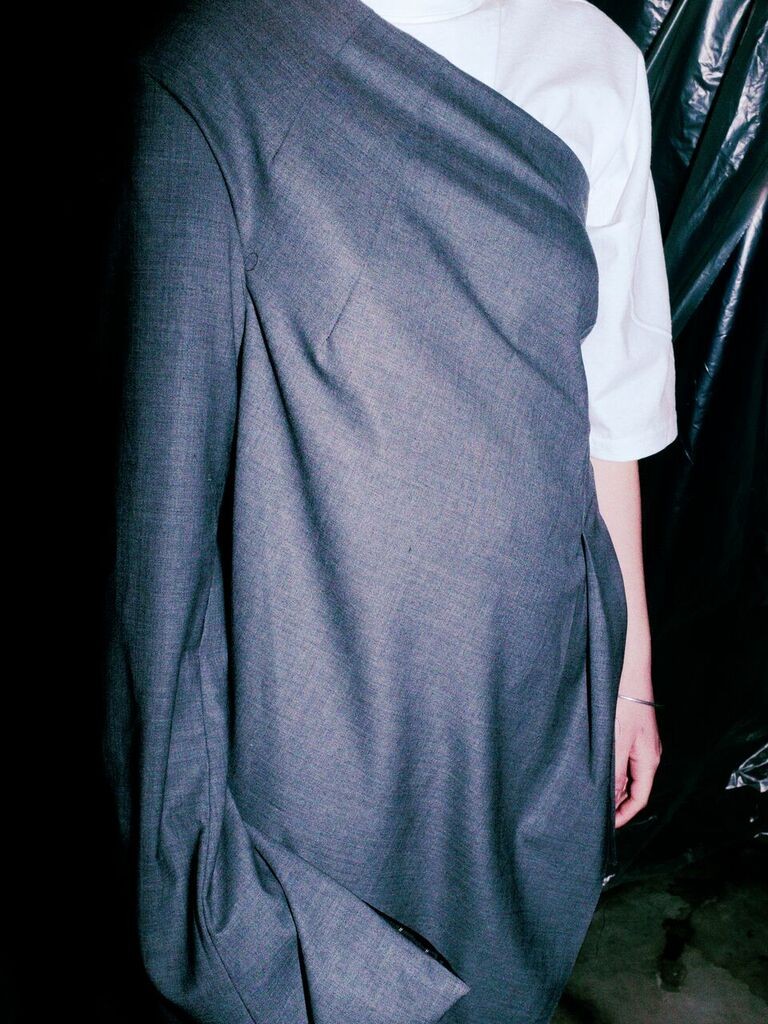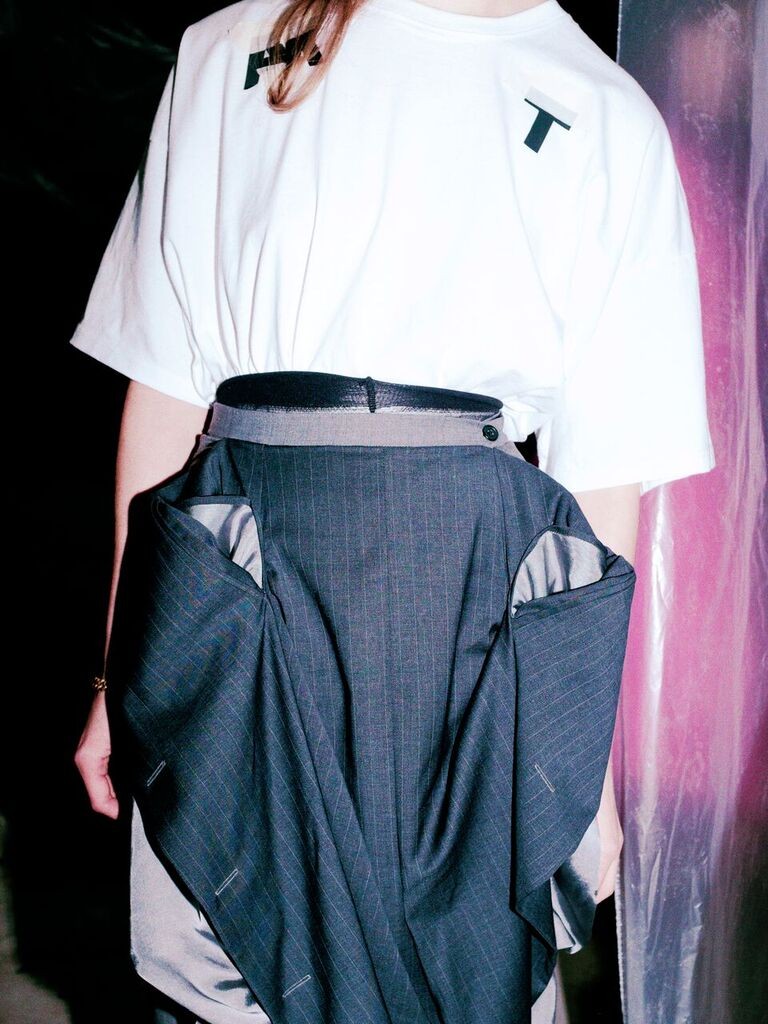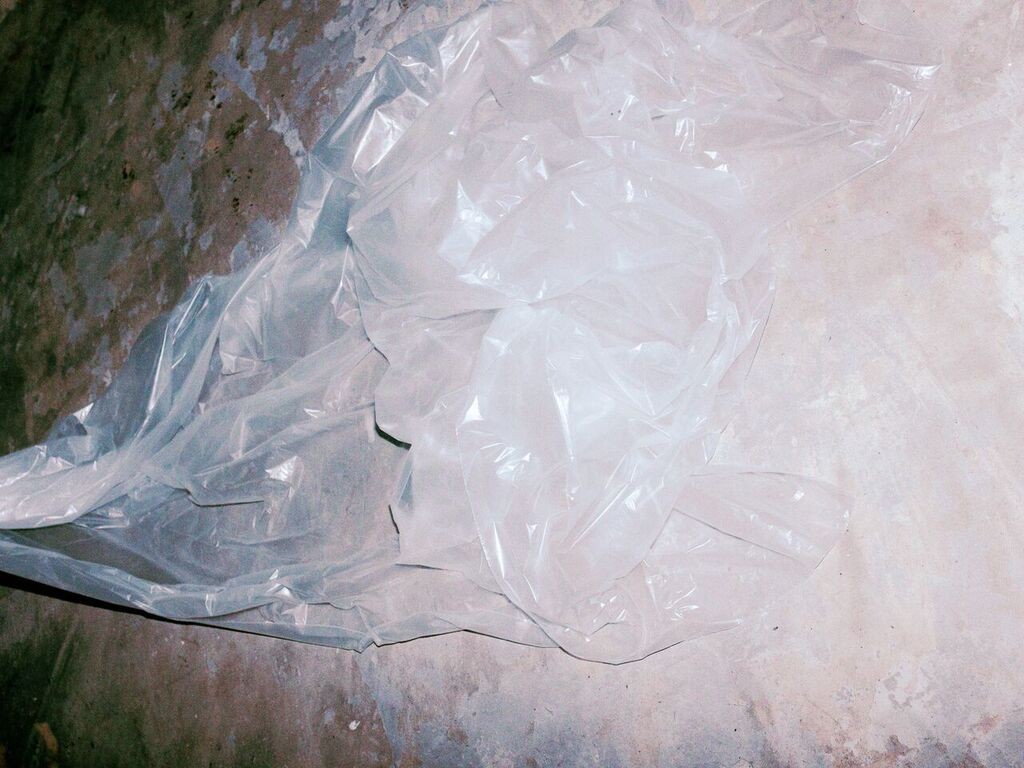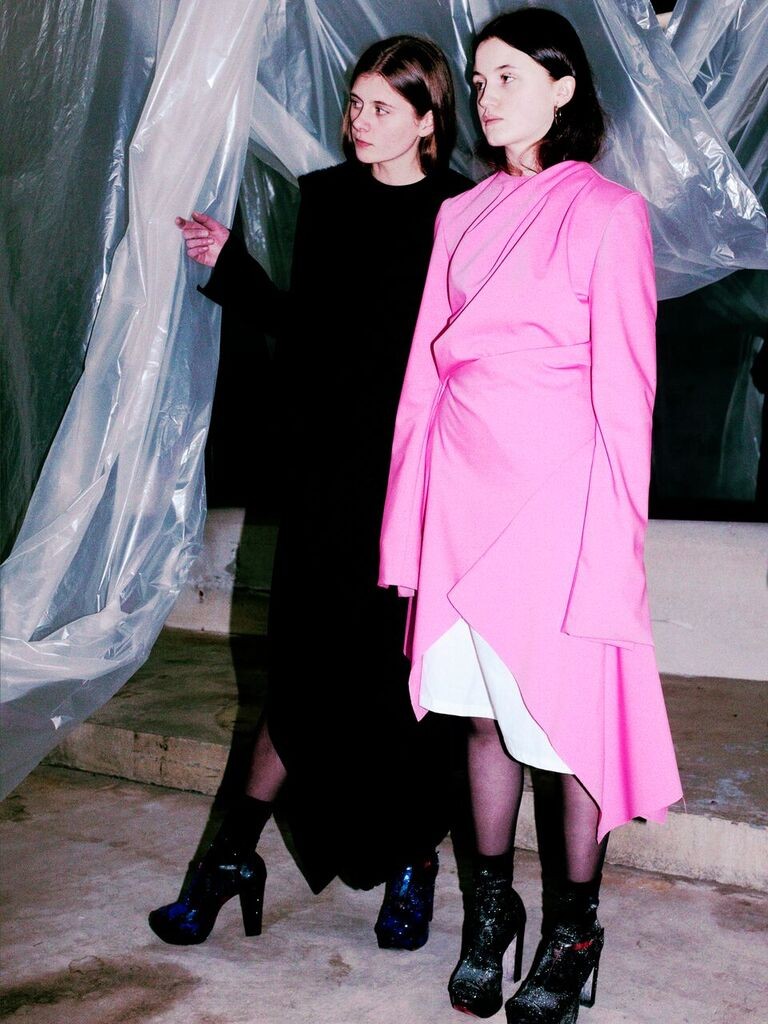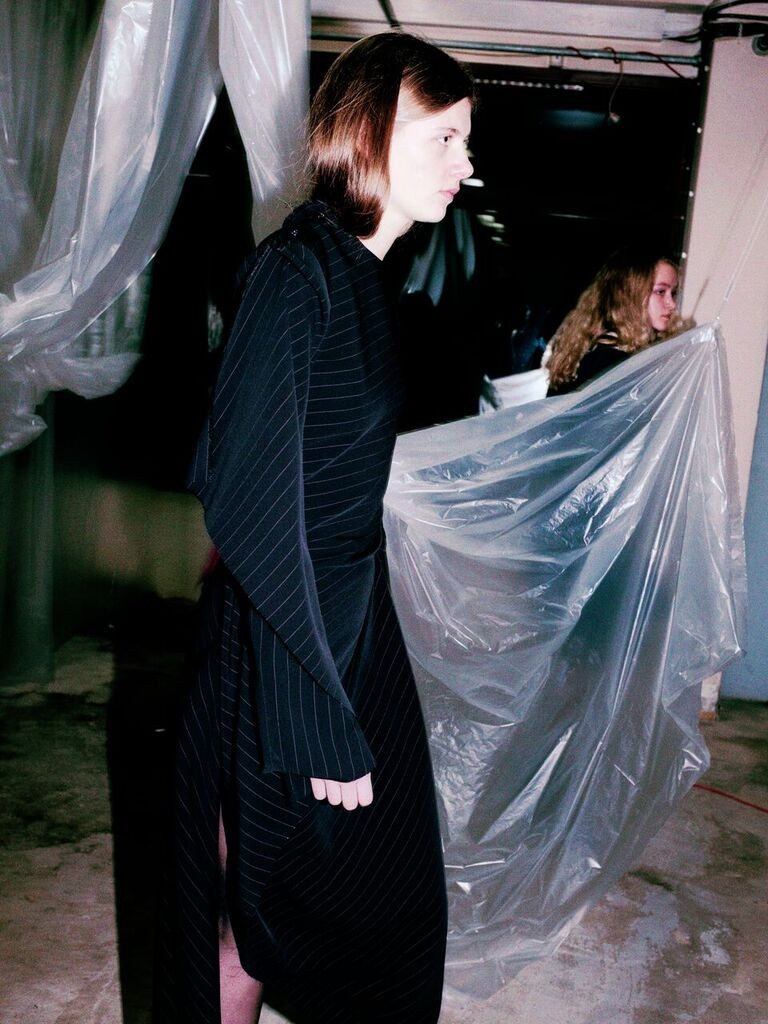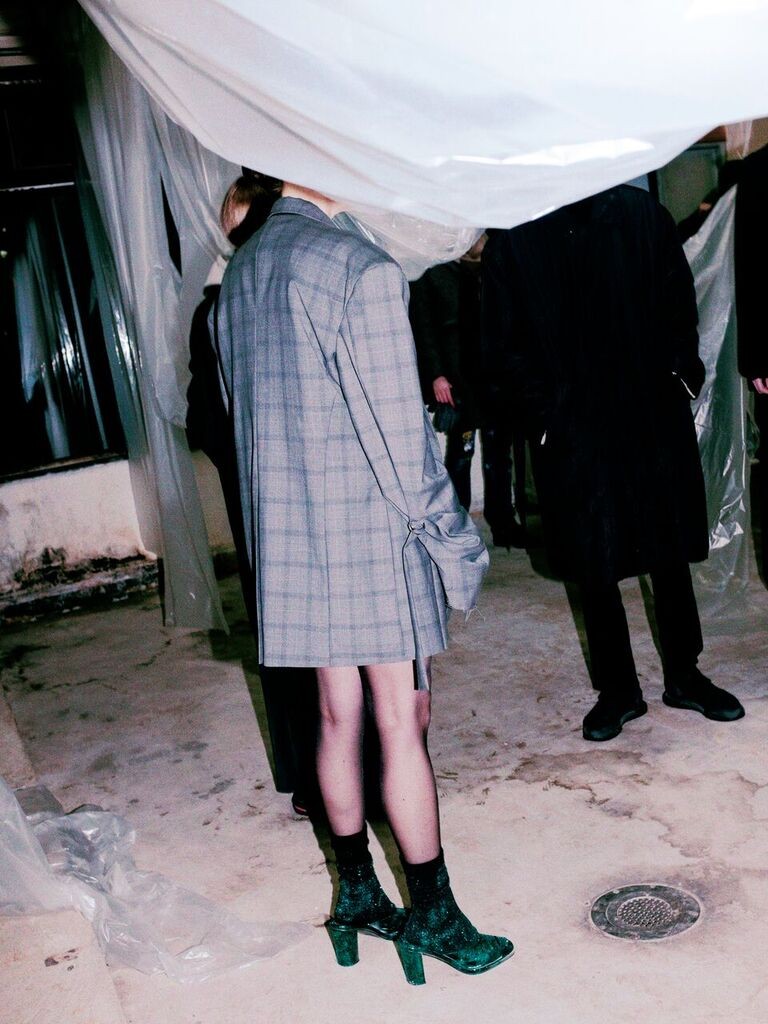UNCONTAMINATED x monDieu: Introduction
It is not until recently that the monDieu logo has redeemed its place as crest of our website. As many of you might have noticed, the top spot was occupied by another logo for a critical amount of time. Internationally rising fashion art festival UNCONTAMINATED has succided in doing a massive monDieu takeover, so for a long time all our published content was UNCONTAMINATED material only. The online conquest is still just a tiny fracture of all the drama that went down. It all began a while before the cold autumn festival days. On a warm summer evening at the edge of night, right before a golden red sun disappeared behind the St.Hans Hill, monDieu Editor Maren Serine was taken captive and persuaded to take the title Editor for UNCONTAMINATED.
The elegant abduction went down in a rather unusual way. Maren Serine had voluntarily arrived at a trendy wine bar in Oslo to meet with Torstein Lohne, Rita Larsen and Hilde Reljin. Her friend Torstein had gotten involved with UNCONTAMINATED through his studies at School of Fashion Industry. Some weeks ago he had invited her to contribute to the festival with a few texts presenting artists from the festival line-up. Right now, thinking back, it is quite funny to remember how the four of them nibbled from a little cheese plate that evening as the whole situation turned out to be a giant mousetrap.
Torstein had been the first one to arrive at the wine bar dressed in dark and heavy clothes, almost as a reminder of that fall was coming. Maren Serine arrived shortly after with khaki capris and cream colored knitwear. The two of them ordered drinks and something to eat before they settled for a table out on the sidewalk. Moments later, Hilde strutted smiling towards them with a long summer dress blowing in the cool breeze behind her and a big leather bag on her arm. The three of them had already finished at least half of the cheese plate and Hilde had even revealed details about next year’s festival when Rita joined them in an elegant black outfit, wondering out loud if anyone else than her would like a glass of Champagne.
A few weeks later it was time for the UNCONTAMINATED team photo shoot by resident photographer Yoo Sun. That sunny afternoon Maren Serine got out of her friend’s car in the East part of Oslo and checked out the old factory buildings towering high above her. Up in a contrastingly white and fancy photo studio inside its red brick exterior, she met the tall, blonde and adventurous UNCONTAMINATED co-Editor Bodil Fuhr. Some weeks after the photoshoot the two co-Editors had completed their written presentation of this year’s festival. After intense days and nights of close collaboration the result of their joined writing was ready: a balance between the abstract and the exact.
The bliss of having completed the UNCONTAMINATED publication didn’t last long as Hilde and Rita’s plans for monDieu suddenly became far more complicated. One day before their festival, they took the other monDieu Editor, Luca, and by that their takeover was complete. Meanwhile Maren Serine had been sent out to talk with invited local artists preparing their pop-up exhibitions and Luca had to publish everything along the way.
And then: During the two days of UNCONTAMINATED 2016, monDieu had the pleasure of talking with:
10 Magazine
Let’s Panic Magazine
Festival Curator Riccardo Ruini
Bob Recine
Jenny Gage and Tom Betterton
Synchrodogs
Charlie Engman
Amanda Charchain
Arielle Chiara and Zoe Bleu
Isabel Martinez
Void
Planeta
The line-up and international media interviews and will be published soon.
Recap: #AlexIsrael at Astrup Fearnley Museet
Text Maren Serine Andersen Photos Luca Sorheim
Big chill with ice cream, sunglasses, palm trees, sunsets and Spanish architecture. Early September in Barcelona was full of Alex Israel moments like these. Especially with the artist’s profile outline on my pastel colored bag that came with me almost everywhere. We spent long, lazy days at the beach, visited Samy the Parisienne in her sneaker shop and danced to a late night set by Sven Väth. Back in Norway the summer is over in the calendar, but Indian summer is in the air. Alex Israel’s exhibition of his Los Angeles portrait has closed, but here is the monDieu recap.
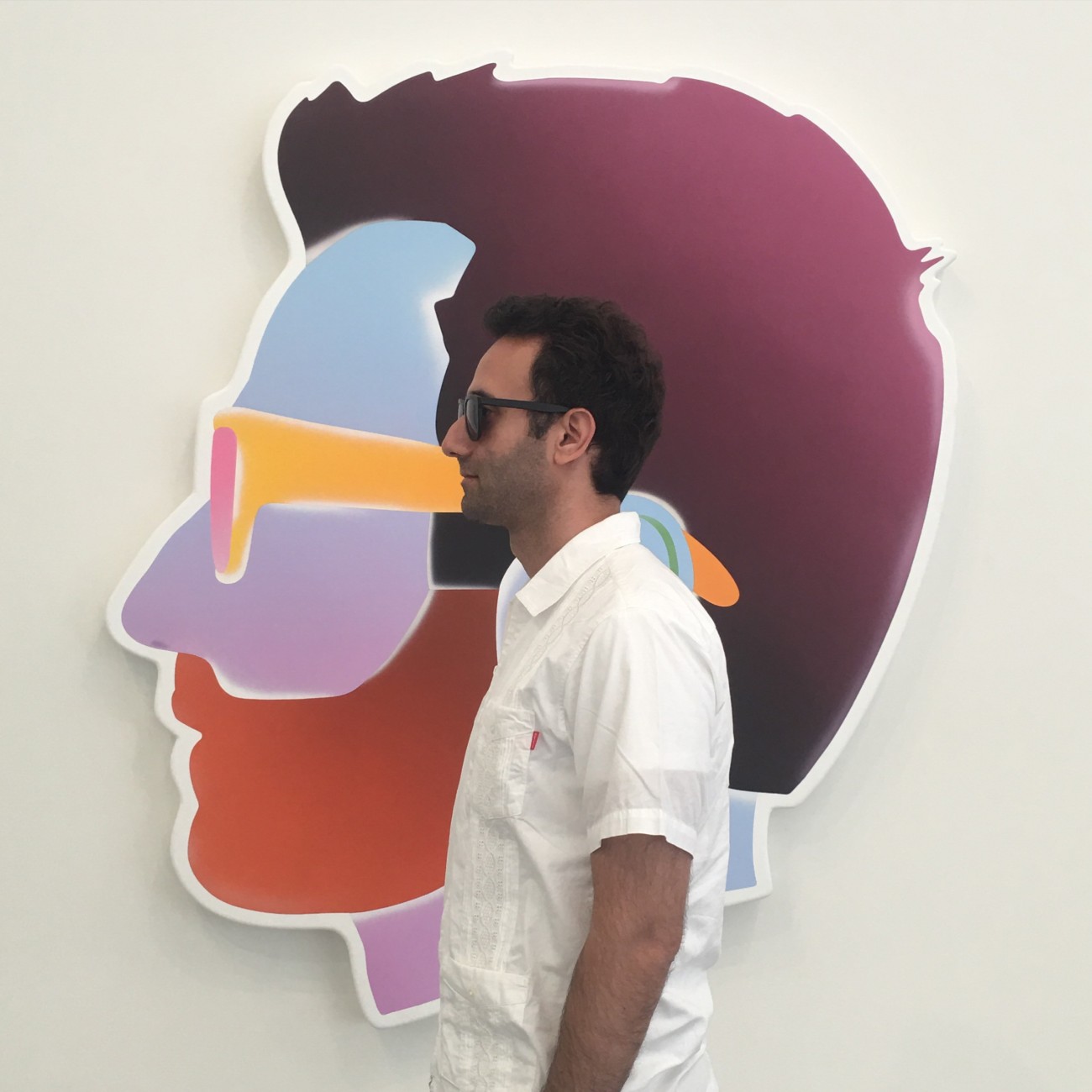
When Alex Israel waited for the press to present his exhibition he was leaned towards the balcony fence next to loads of white film director’s chairs. It looked a bit unreal, like seeing a live photograph, and his characteristic sunglasses were kept on the whole time. He wore a white short sleeve shirt, white sneakers, and khaki trousers. Everything seemed flawless. Even many hours later at his artist presentation in the afternoon. He had changed to a floral patterned Hawaiian shirt in black, green and yellow at the vernissage in the evening, and kept it on for the rest of the night when he played a fun DJ pop-set at a local techno club.
Alex Israel’s artistry explores the symbolic representation of his hometown Los Angeles, the film industry in Hollywood and the admiration of celebrity where clichés are embraced. Los Angeles is central to the artist’s translation of American culture in general and his perspective on the American dream itself.
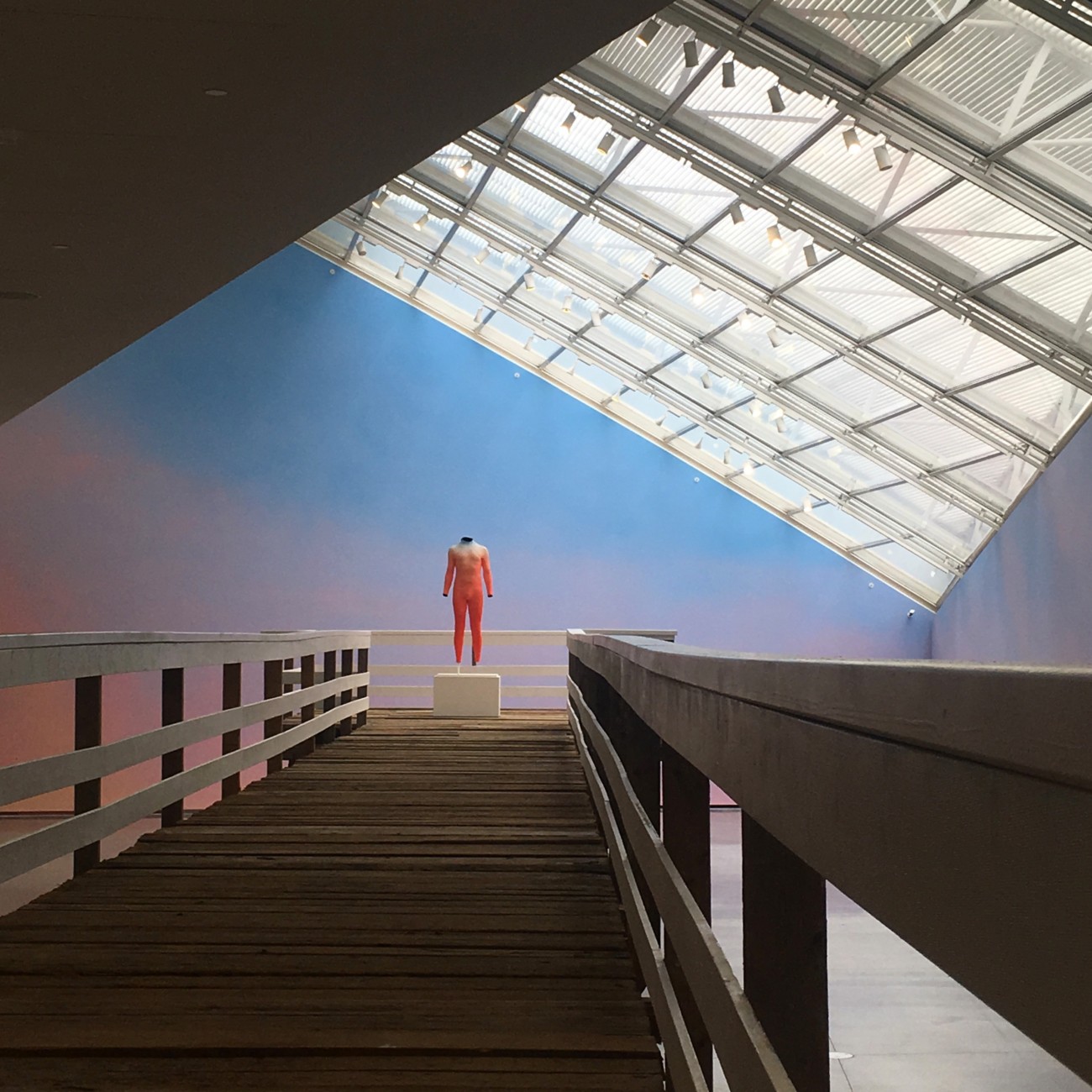
Astrup Fearnley Museet is placed right above the sea, which was reflected in a central piece of the exhibition; an installation that appropriated the Paradise Cove Pier from Malibu into the museum space. The artist had created the installation to give an experience of a míse en scéne piece. He also brought with him the scenic artist from Warner Bros, Andrew Pike, who had painted a typical, colorful LA sunset over the white museum walls as view from the pier.
Walking on the rough texture high above the polished concrete floor made the museum space feel very different from before. On the tip of the pier a wetsuit was standing in its unsmooth and bright red loneliness – coated and colored just like a typical building in LA. Unlike most other wetsuits nowadays, that are made in Korea, the wetsuit had been made in Huntington Beach, a place also called Surf City. The wetsuit is a prop from one of Alex Israel’s films, SPF 18, and the trailer that was looped on a TV screen upstairs smoothly reminded of the exhibition’s opening piece. The colors of the wetsuit downstairs harmonized with the beautiful sunset backdrop and made it all feel just perfect. That wonderful feeling lasted until I learnt that the extremely strong colors in the Los Angeles sky phenomenon painting reflected and symbolized the extreme pollution poisoning the city.
COS x Serpentine Galleries
Text Fredrik Austad
The Serpentine Galleries have for the last four years collaborated with the minimalistic Swedish brand COS, and can this summer announce the continuing of their partnership, supporting the Serpentine’s Park Nights in Kensington Gardens. Karin Gustafsson, head of womens wear design, has earlier stated that COS, as a brand inspired by the arts, not only see the gallery as an establishment at the forefront of creativity but also as a charitable trust with a strong background in arts education.
The Park Nights are a series of events, talks and performances within music, art, litterateur, film and dance, that stimulates a social environment for the creatives, both artists and audience. The nights take place in the Serpentine Pavilion, this year designed by the Danish architecture firm Bjarke Ingels Group(BIG). BIG is a Copenhagen and New York based group of architects, designers, builders and thinkers operating within the fields of architecture, urbanism, interior, landscape design, product design, research and development. Founded in 2015, the company strives to make architectural design solutions compatible with our modern society.
“For this year, BIG wanted to create the extraordinary out of the ordinary, based on something as simple as a brick wall. The pavilion consists of fiberglass frames, plush-shaped aluminum profiles and big wooden boards. By pulling the identical frames a part, we create this undulating cliff on one side, and an open cave-like canyon on the inside. The installation gets skinnier towards the top, so when you look straight at the frames, the Pavilion is completely immaterial. The more oblique your angle becomes the more solid it becomes” says Bjarke Ingels, architecture and founding partner of BIG.
“I think one of the most important things is that this structure is really open to everybody, free to all. It’s a space that people make their own, and I think that’s one of the best things about the Pavilion, that its access for all, art for all, as Gilbert and George say. It’s a way of really engaging with architecture in this wonderful context of a Royal Park of Kensington Gardens.” – Julia Peyton-Jones, Director of Summer Programmes.
COS will release a limited edition t-shirt collection for both men and women, marking the collaboration with the Serpentine Galleries. Staying true to the brands DNA, re-inventing classics, the t-shirts will be updated with an A-line cut and elasticated sleeve hems for women, and rolled sleeves for men. Made in 100% cotton in grey mélage, the limited collab will be available in Europe at cosstores.com and the proceeds from the sale will be donated to the Serpentine Trust.
Chronicles: Vacay report in colors
Red: The first evening in Barcelona was all about British music. Amaia from Bilbao and I danced to Indie, Rock, Britpop, Shoegaze, Psychedelia and Freakbeat at «Weirdo Club» by Edu Lazaro.
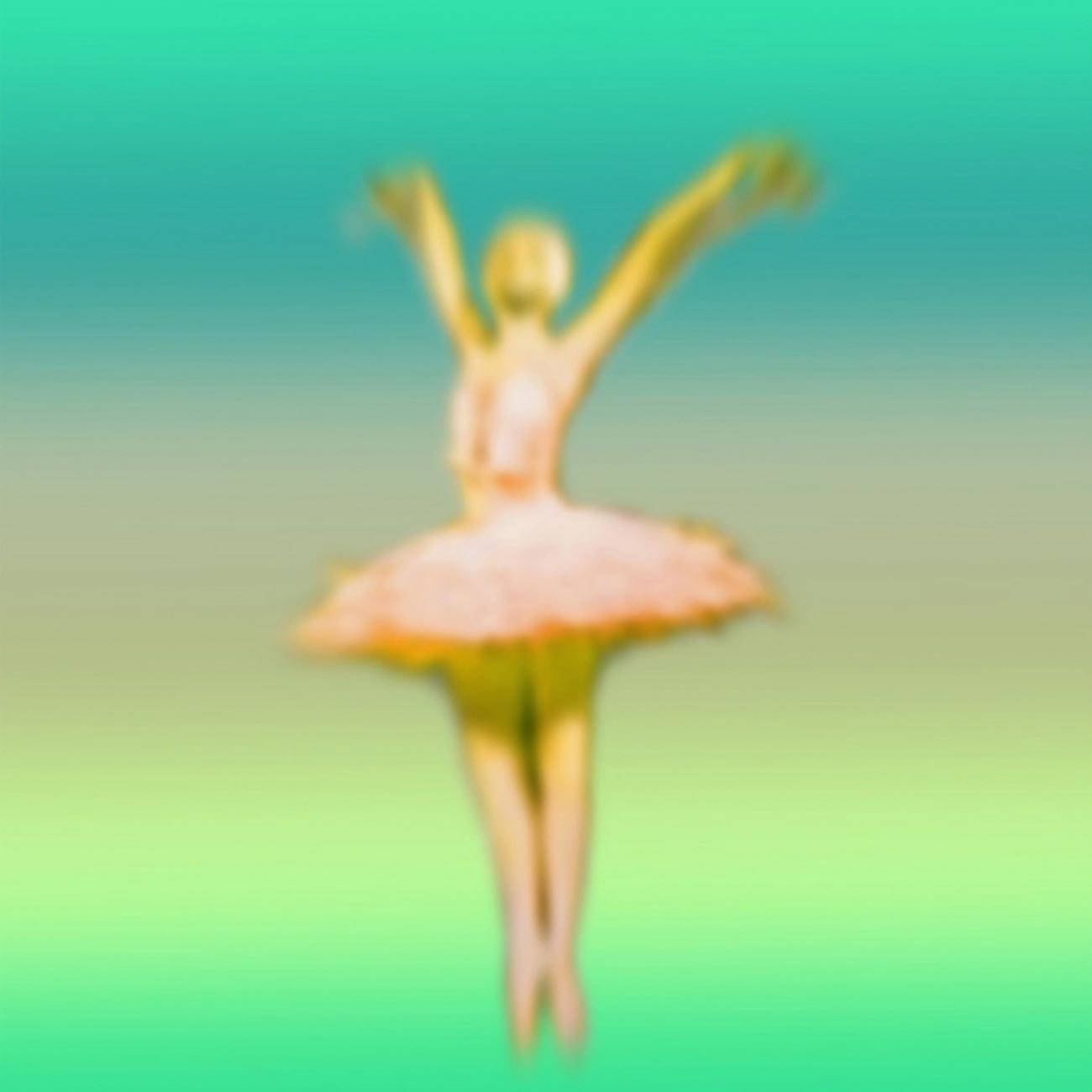
Green: The evening after we danced some more.

Green: Japanese psychedelic rock band Kikagaku Moyo meditated on stage before their concert. Afterwards they signed our records.

Blue: Le Swing Vintage is filled with top vintage design collected by two nice Cuban guys. I found jewellery, white sandals and a midnight blue kimono.

Blue: The palm trees outside Nicki Beach Marbella were beautiful.
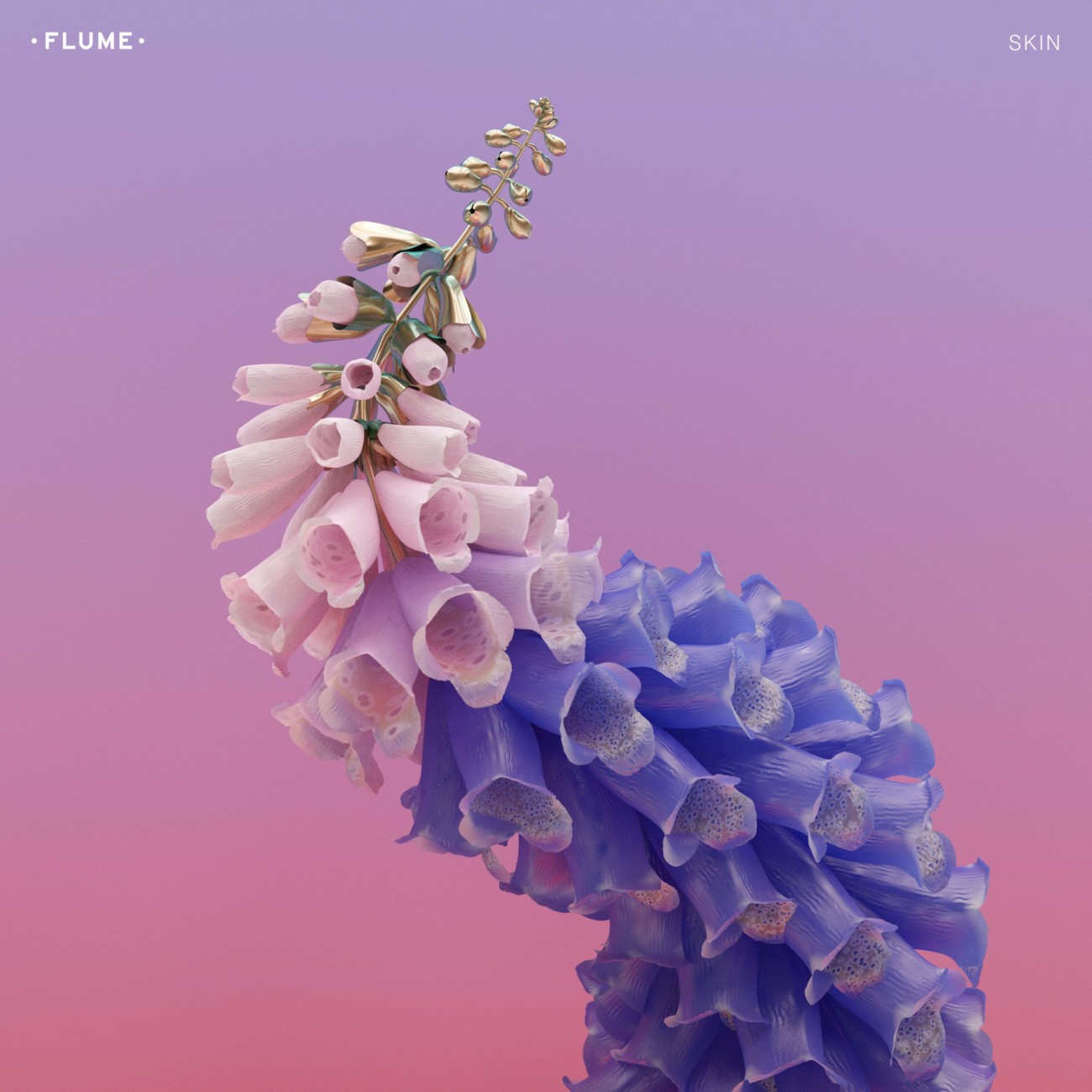
Pink: Flume was definitely the king of Sónar.

Turquoise: Our only two weeks old hotel had a clear glass rooftop pool.
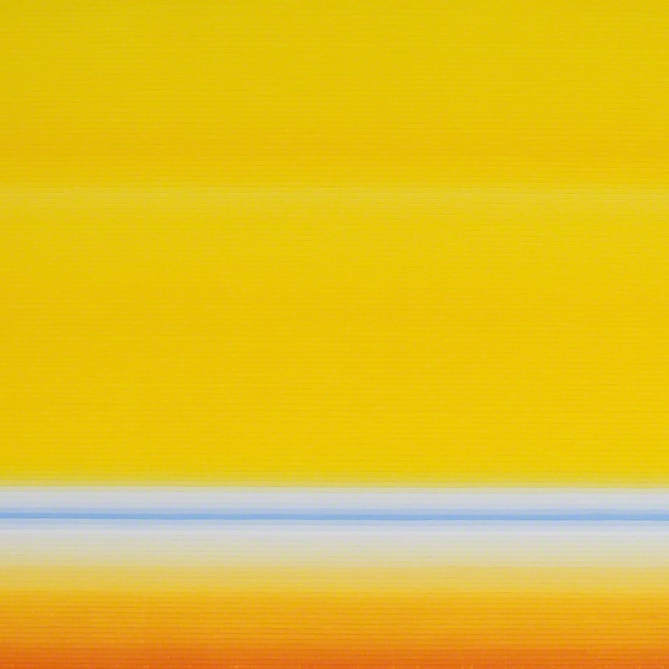
Yellow: A DJ called Sugar took me to a Dominican restaurant. He knew everyone there. We drank cold beers and ate fried banana with a sweet mango dessert in the end.

White:
«Jardí Botànic»
Even though the summer had not yet become sticky, a breeze that never reaches the downtown streets felt soothing on the skin. Gardeners in grey, with their caring hands full of earth, was a mesmerizing sight. Memories of warm, bright days from gardens of grandparents begun to float in the vague mirror showing what is forever lost. The eyes closed and the ears listened to the sounds of the shovels, and suddenly I didn’t feel alone anymore. A moment after the eyes opened and could see everything clear for the first time. The landscape architecture was impressive, but the flowers were lovely.
– Hannah Gideon
Chronicles: An evening with Pasenau and Luksengard
Text Maren Serine
Maria Pasenau came smiling into the foyer dressed in a blue and white football shirt with delicate gold necklaces camouflaging the Italian flag on her chest. Maria’s dark hair was parted in the middle and drawn tight back in her neck, a hairstyle that made her look a little bit of Wednesday from The Adam’s Family. Her neck was piled with three tattoo chokers in black, brown and transparent. Maria ferociously hugged Maren Serine and explained that she had just sold an old camera to the guy that Maren Serine had seen her meet up with outside and now she really wanted them to celebrate with drinks.
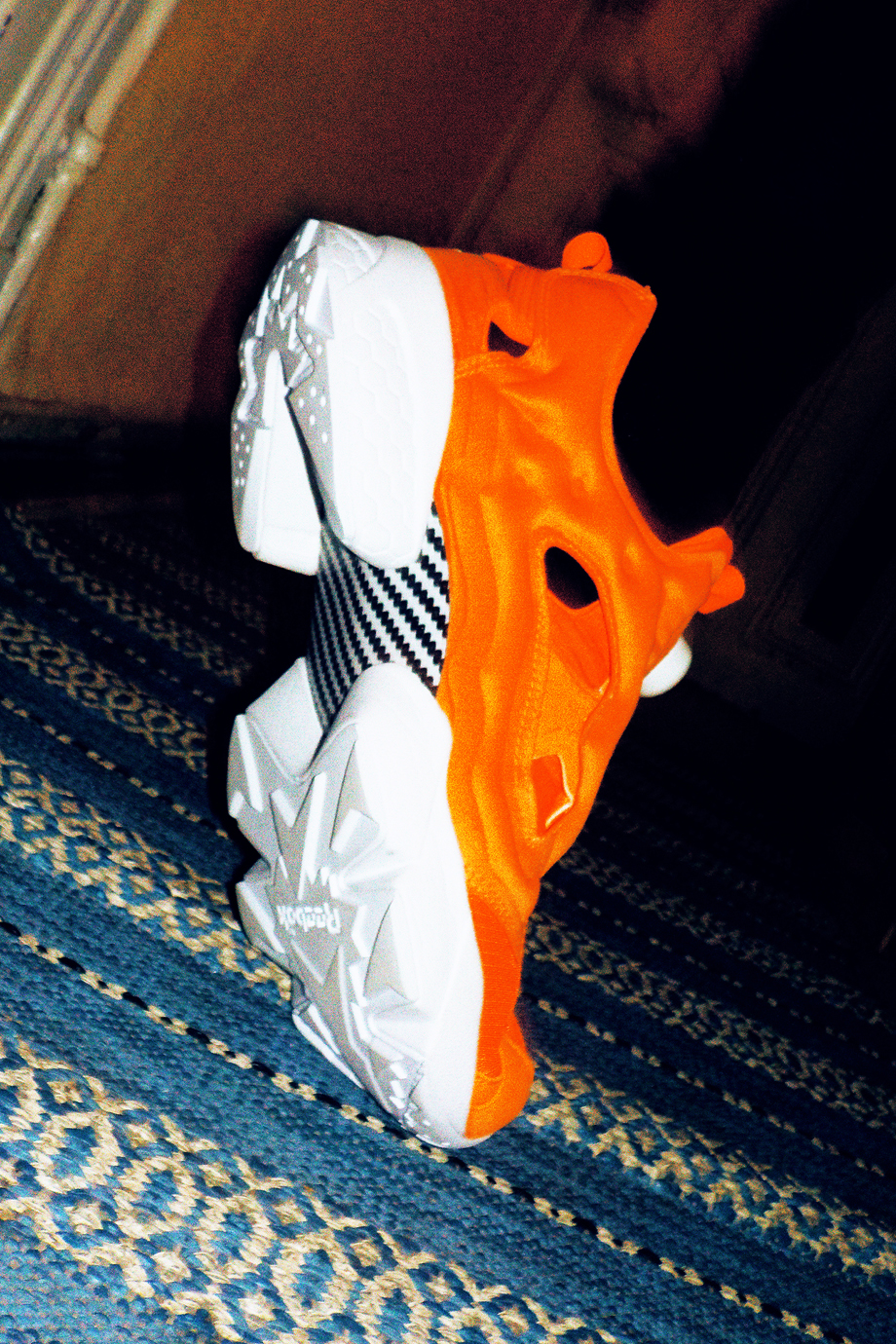
Untitled by Maria Pasenau
Shortly after, Signe Fuglesteg Luksengard arrived carrying a travel bag over her shoulder. She was wearing a white and navy striped t-shirt under a new mustard colored trench coat. She had recently fallen for it in Paris when she was on a vacation there with her boyfriend. The blonde hair was pulled up in a loose ponytail except from a few strands on the loose that she stroke behind the ears before she greeted the other two girls with gentle kisses on their cheeks.
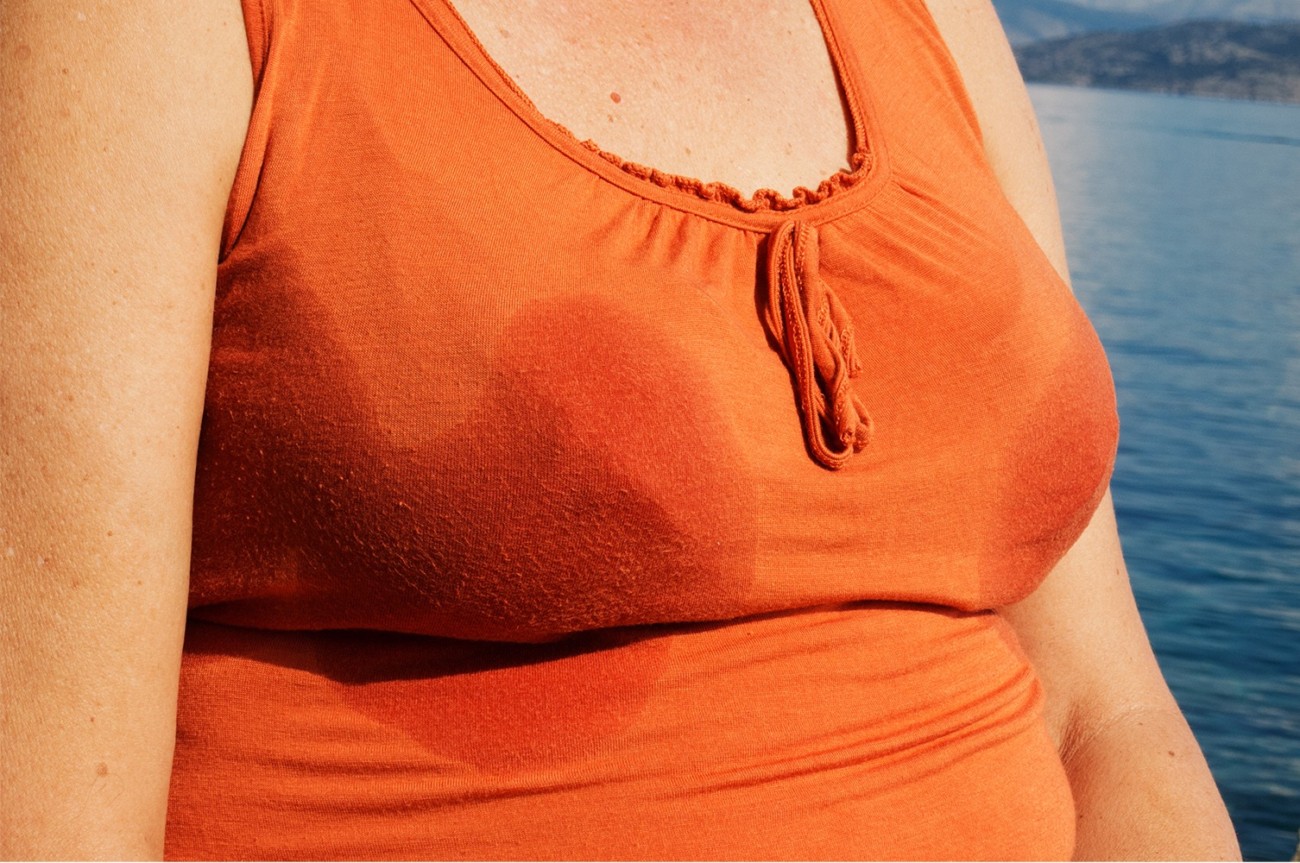
Blaut bikini by Signe Luksengard
Maria went up to the DJ-booth and triumphantly held a Mac DeMarco record up in the air. «Salad days» was the title of the record, which was right down her alley in many ways. It had been a very hot day and the three of them sat down on wooden chairs around a grey marble table to cool down with some drinks. They all knew each other a bit from before, but this was the first time that they had got together to talk professionally. The reason for the occasion was the exhibition 01 PHOTOGRAPHY NORWAY by UNCONTAMINATED Oslo Fashion Art Festival, and Maren Serine had been thrilled to discover the two monDieu members among the nine photographers chosen for their unique expressions in-between art and fashion when one of the founders, Rita Larsen had sent the invitation to monDieu.

Signe told about her photo shoot that recently had been published b the fashion magazine REVS, and the girls exchanged their thoughts on fashion photography. They had all noticed how many fashion photographs lacked any narrative and how common it was seeing ordinary models doing trendy poses with absence of inner expression and character. Signe expressed her frustration of how this trend in fashion photography constantly promoted something she considers lifeless and unhealthy role-models and that she always searched for loopholes for artistic freedom. After a sip of the foam on her whiskey sour, Maria optimistically told about her work for Recens Paper where she had recently become in-house photographer. She explained how much she loved being a part of a group that moves away from the kind of forced perfection constantly polluting fashion, and that she grows cratively by doing exactly as she wants as a fashion photographer.
When Maren Serine asked if the girls had met the other photographers from the exhibition line-up they both shook their heads, but Signe knew that one of them came from the same place as her. Knut Bry was also from the valley Hallingdal right in the middle of the East and the West of Norway. This made Maren Serine imagine that growing up in such beautiful surroundings had to be a reason for the romantic touch that she had noticed in many of both Signe and Knut’s photographs.
Photographer Massimo Lardini was the curator of 01 PHOTOGRAPHY NORWAY, and the girls were fascinated with the photographs that he picked out of everything they had and how he arranged them in a different way than they would have themselves. From Maria’s ongoing projects the curator had chosen eleven pieces in 20 x 30 cm and a self-portrait in 70 x 100 cm. Except from the big self-portrait, all of her works were still-life photographs showing what Maria finds most beautiful but the same time most difficult.
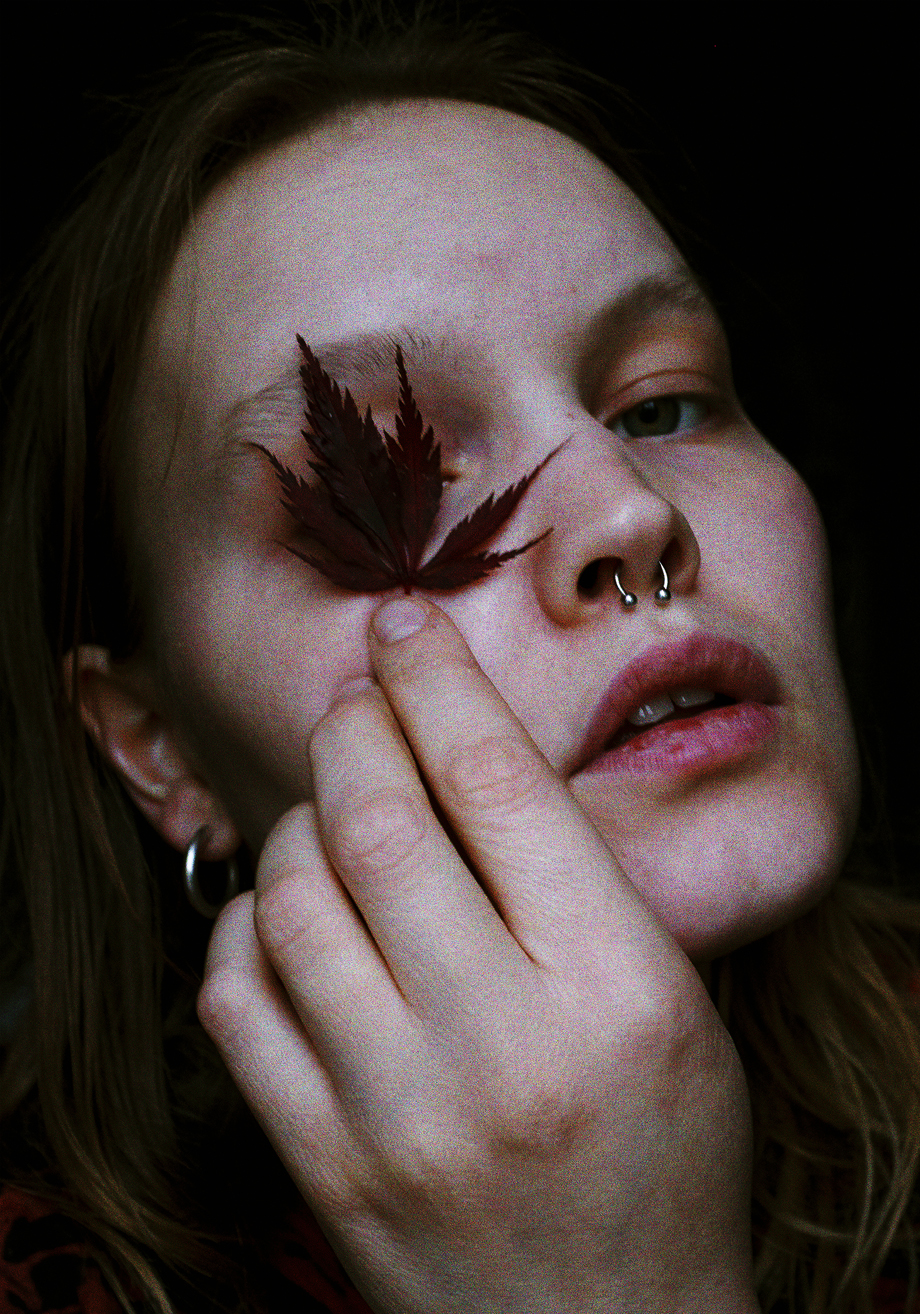
Untitled by Maria Pasenau
Signe’s theme for the exhibition was abstraction and cosmos, and the curator had chosen eleven of her pieces. A photograph printed on A2 paper was of a man in snow. She explained that the landscape looked like it could have been shot on the moon. The rest of Signe’s photographs followed the same pattern; Two photographs printed on A3 paper showed a forrest and a white hand. Seven photographs printed on A4 paper pictured green sea, a wet bikini, dead foxes, cars, a person running away, a fisherman from Lofoten and a cod from Lofoten. Two photographs printed on A5 paper had sparkling shards and smoke on them.
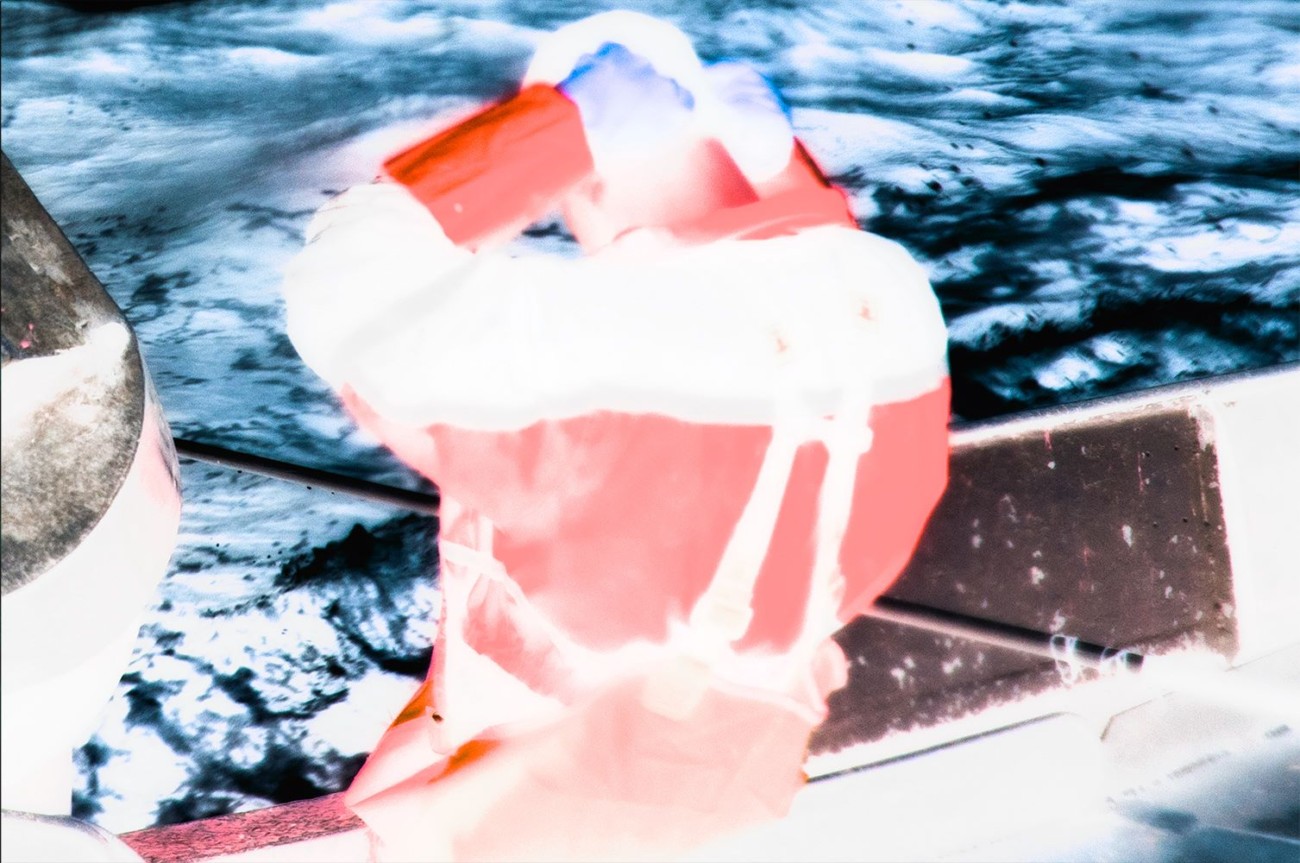
Lofotfiskar by Signe Luksengard
In many ways the two girls reminded Maren Serine of the title of Maria’s exhibition at the Art school Prosjektskolen where she is a student; «Same same but different».
Matthew Barney – Bildungsroman
Text Maren Serine Andersen Photos Luca Sorheim
My aunt wrote and asked me if I wanted to go to an art exhibition. She was traveling from the south-west coast this weekend to spend some time in Oslo, and we had already planned to get together. I got curious immediately and asked her which exhibition she had in mind. She wanted to go to the Astrup Fearnley Museum, and the idea thrilled me right away knowing that this would be last day of the exhibition Bildungsroman by Mathew Barney and said yes.
At first I had been totally unaware of Mathew Barney’s ability of magnifying ideas and objects out of proportion, and the massive amount of details in his works transforming his imagination to materialize in reality. After the day that Ida Moen from the Astrup Fearnley Museum introduced the Contemporary Art superstar’s complex universe to me, I had been at the exhibition twice and seen two of Mathew Barney’s films. In the beginning I just admired his sculptures as beautiful objects, but as I started to recognize them as props in the films that were looped on juxtaposed screens, I started to get a bit frightened by the gloomy vibes that changed the sculptures.
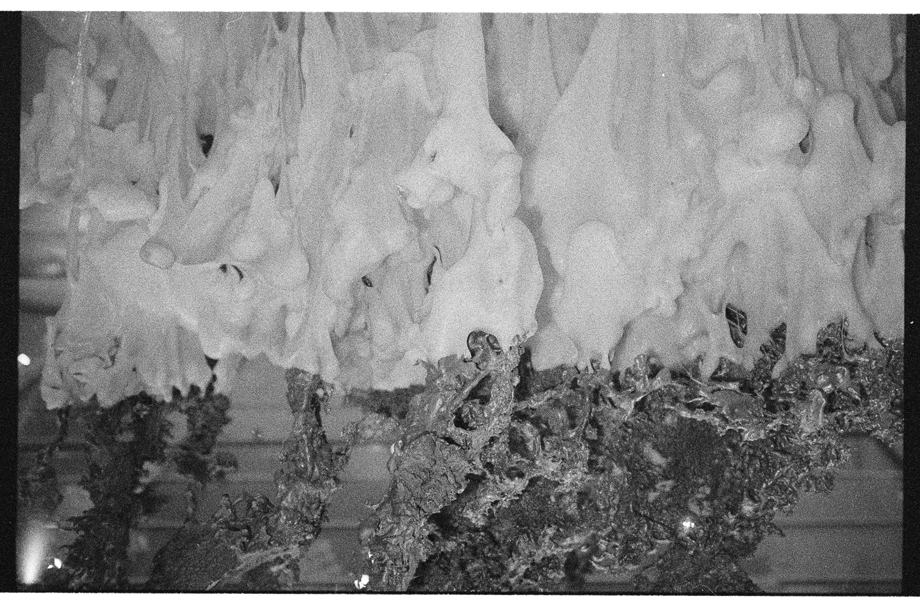
When Mathew Barney visited the Museum for a conversation about his artistic body of work with the critic and curator Catherine Taft, I knew almost nothing about him and hadn’t even seen a picture of the man. My first impression was how calm he seemed when he entered the room that was absolutely packed with audience. My second impression was that he looked casually underdressed but also noticed that his shoes looked very expensive. The way he talked about his ideas around creative process felt almost like hearing about a new kind of science as the precision and intricate details of his projects were overwhelming with advanced information.
According to Gunnar B. Kvaran, director of the Astrup Fearnley Museum, Mathew Barney is definitely the artist from the 1990’s that has changed the tradition of sculpture most thoroughly. The exhibition «Bildungsroman» collects Barney’s legendary sculptures from the 1990’s, like Transexualis (decline) with newer pieces, like the amazing White Dwarf. The most central symbol in Mathew Barney’s universe is the field emblem, a capsule bisected by a horizontal line, which appears in many of his films. Because of its symmetry, it is used as a symbol for a state of equilibrium. At times, a “half field emblem” represents a state where one option has gained dominance. The field emblem can also be read as a symbol of an orifice in both its open state as a capsule and closed state as a line. The symbol is part of the sculpture Transexualis (decline), and it also appears as an enormous independent sculpture on the deck of a boat in his film collaboration Drawing Restraint that he created together with ex-girlfriend and fellow artist Björk.

White Dwarf
I was reading my notes on their film collaboration and remembered Bjørk’s beautiful red cape and her hot Yuzu bath scene when someone that I hadn’t talked to for a while suddenly wrote to me. I did get a little annoyed letting myself be so easily distracted, but wrote him back right away. All I focused on at that point were beautiful images anyway, and it felt impossible to find an essence of Mathew Barney’s work.
When I told him that I was working on a text about Mathew Barney, my friend offered me his original Cremaster book from the nineties, and pointed out that the weight of it was at least 10 kilograms. Uncertain of wether this was just a clever insult or if I was actually offered a gift, I replied to him on impulse how perfect the heavy book would be for squats. Shortly after it occurred to me that my fantasy of using the book to exercise was actually a natural reference to some of the elements that dominated my idea of Mathew Barney’s artistry: symbolism, resistance and mixing arts with athletics. Besides that this was absolutely an experimental use of material, something he is famous for.
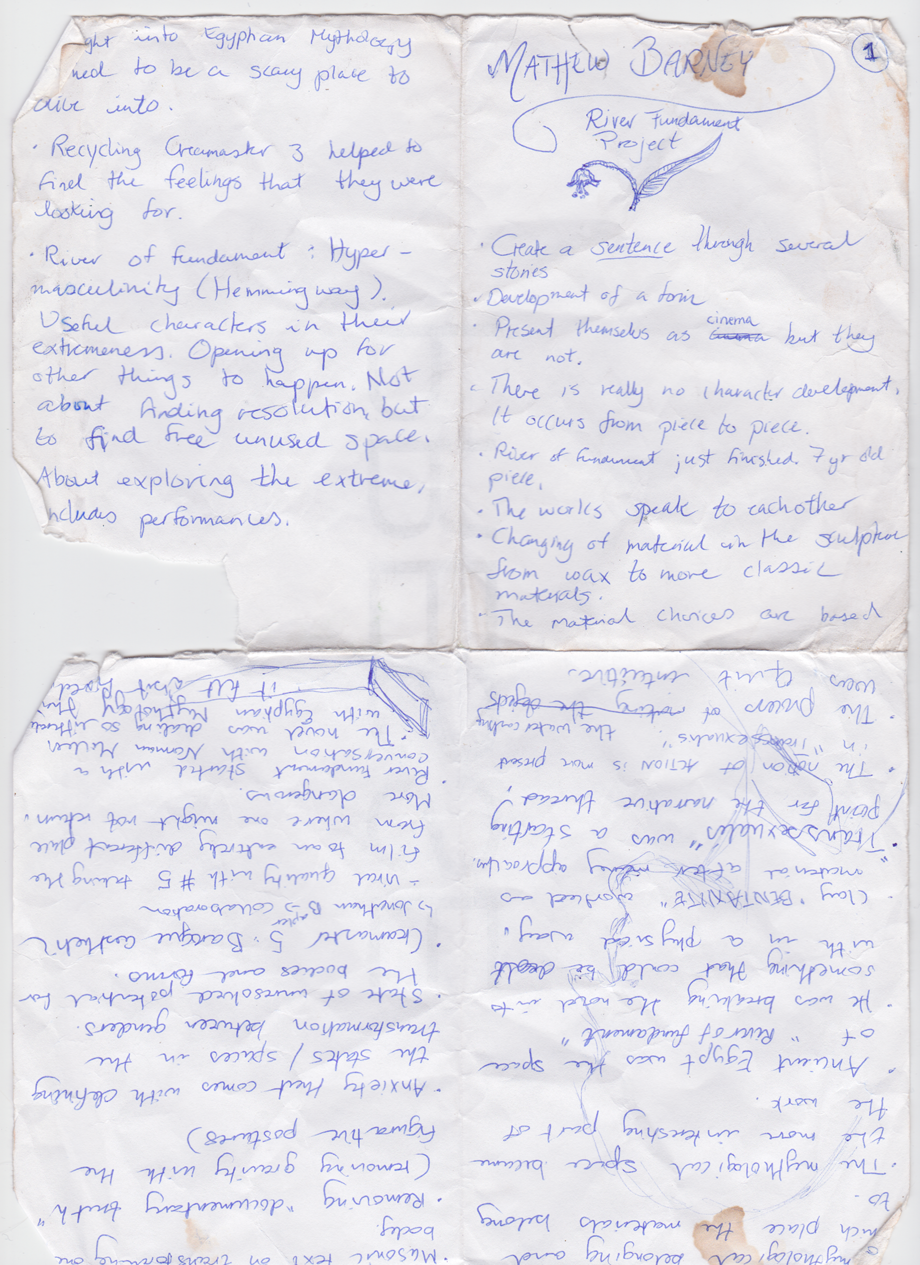
In his universe, the spectator is moving through a detailed combination of sculpture, installation and performance put together. Even though the sculptures are impressive pieces of work, these are only fragments of Mathew Barney’s complex artistry. Being infatuated with his beautiful objects at first sight is not hard. One reason for this might be his inability to follow any one particular thread to the end. The artist personally thinks that part of this is not wanting to understand something completely to the point where the project will become about that thing. He thinks this is the way that he absorbs things on a day-to-day way and that there isn’t necessarily a conscious. What is most exciting to him is when his ego dissipates and the project becomes much larger than he is, and it starts to make its own demands.
Chronicles: A Slippery Slope
Luca Sorheim and Maren Serine‘s voices blended softly together with the buzz of a strikingly stylish crowd gathered together. The fields of Fashion, Art and Music were united by rmingling while sipping on trendy beverage on a photo exhibition opening in downtown Oslo that evening. They were climbing a steep stairway leading from the basement of the venue, F5 Concept Store, up to ground floor. Right before reaching the top, a wide-eyed Luca told Maren Serine to stop. He seemed to have noticed something on the final step and started giggeling with a very amused look on his face.

Dope Movie
When they arrived earlier in the evening they were greeted by the smile of Benjamin Krystad Marthinsen, co-founder of F5 and co-designer of resident brand GRAA. After explaining them about the exhibition vernissage that tempted them with a look at the ongoing renovation down in the studio area. This was a little after welcoming them to the vernissage that they arranged, and off course a few habitual jokes thrown between himself and Fredrik Austad, that (that hva?). Fredrik Austad had already seen the changes as he used to come by the store quite often and remained in the energetic atmosphere upstairs together with the host.
On their way down the stairs to the basement, Luca Sorheim and Maren Serine went noticed how they calmed down feeling the rather contrasting calmness to the loud music and ensemble of high-pitched voices that they still could hear from the floor above. They were both a bit caught off guard when it came to the social And then they bumped into Gard Eiklid from Rod Bianco Gallery and in-house designer Magne Risnes for brand AÙMA. The tall and fair haired welcome committee had also taken their escapes from the cultural mingling spree in the main room to relax for a bit. After catching up with the guys, the definite highlight of evening took place.
Perfectly timed with one of mon Dieu’s favourite looks from Givenchy Spring 2016 menswear collection, physiotherapist Sven Renberg, gave an improvised performance presenting the art of tying a man’s Lungi. He had recently returned from a trip to Myanmar and couldn’t have been more pleased with the new centrepiece of his summer wardrobe.
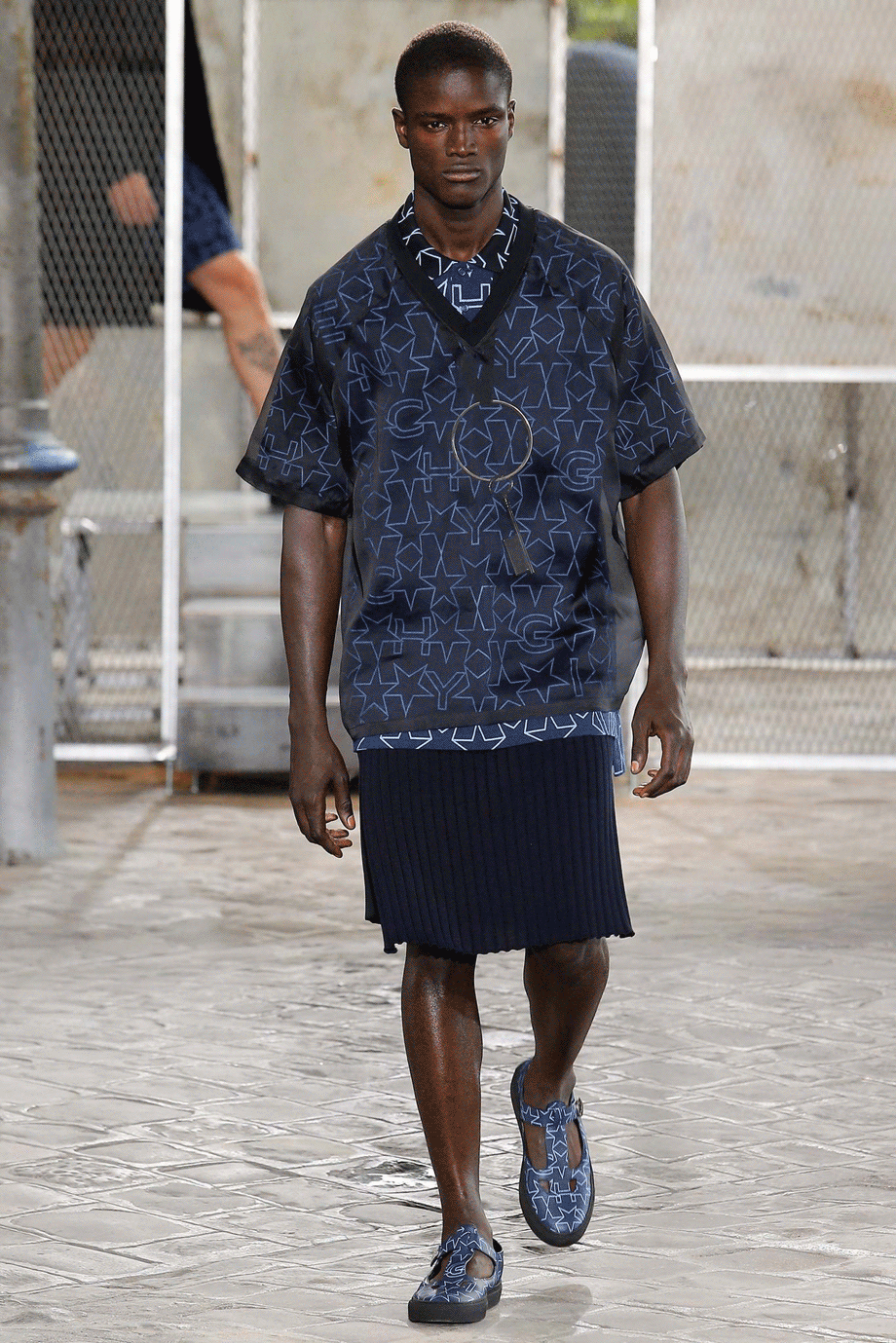
Vogue/Random Lungi guy
After the performance, it seemed like a good idea for Luca Sorheim and Maren Serine to cool down their sudden excitement (med lungien, sant?) with something to drink. It was then, on their way up the stairway that they stopped and started laughing. They both noticed the sign placed on the final step on the stairs, and both had the same theory of why it had been placed there.
After the funny distraction they finally got to the top and Luca Sorheim told Maren Serine to start looking at the photo exhibition arranged on the walls in the exhibition space of the store while he got them something to drink. As she was navigating her way through the flood of guests towards the white walls in the back of the store, she suddenly recognized someone familiar in front of her and went over to faire la bise that is the way of greeting each other in France.
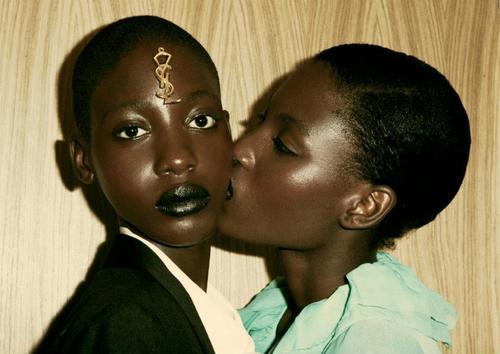
A few moments later Parisian stylist Oswald Amoa briskly tapped his index finger on the cigarette in his hand while explaining the story of his brown hat. In a curious way the headpiece looked brand new while it simultaneously could have belonged in the 1940’s. Maren Serine concluded that maybe the combination with a contemporary cut coat in shiny green material enhanced the confusing effect that the hat had on her.
As Oswald Amoa explained how much he missed Paris these days, Maren Serine realized how monotonous Oslo could be without external style additions. Distinctive style and character could often seem to be heavily outsized by an overflow of Scandinavian minimalism combined with trendy streetwear brands and rebelliously intended sporty references in a color palette dominated by white, black, grey and navy. They discussed how quickly the cultural identity of Oslo was growing at the moment and how easy it can be to get high on your own supply. They concluded that from a philosophic point of view, mimesis easily can become dominated by the imitating kind in such a small place compared to the rest of the world. It is always refreshing to visit Fashion capitals like Paris to get inspired. Interesting fashion underdogs like Moscow offer some really different and game changing contributions. To play it safe and take all the short cuts might be a slippery slope to hubris. (litt langt avsnitt)
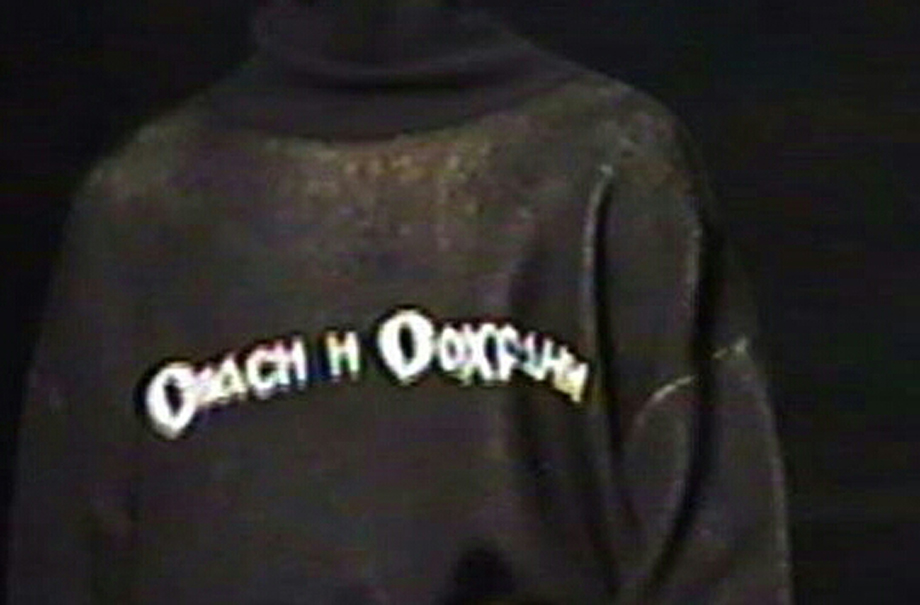
Gosha Rubchinskiy
The Chronicles from Copenhagen Fashion Week F/W 16 and Oslo Runway F/W 16 is still coming up.
COS x Sou Fujimoto
Text Fredrik Austad Photos COS Copyediting Maren Serine Andersen
![COS x Sou Fujimoto3[3][1][2][1]](http://stories.mondieu.nu/wp-content/uploads/2016/04/COS-x-Sou-Fujimoto33121.jpg)
Continuing last years success at Salone del Mobile in Milan, where the Swedish brand COS had collaborated with the NYC based studio Snarkitecture, the brand had for this years design week teamed up with the Japanese architect Sou Fujimoto on an installation called “Forest of Light”, taking inspiration from COS fall winter 2016 collection.
Sou Fujimoto, born in 1974 in the Japanese island Hokkadio, is an architect well known for his work reflecting interactions and connections between humans and nature. Growing up in the Northern part of Japan, in an environment know for its stunning beauty, it is easy to see that Fujimoto has taken inspiration from his home country playing with light, big airy spaces and wood in his work.
COS has been inspired by Sou Fujimoto for many years. Often focusing on negative space and the concept of bringing the outside in, some of Fujimoto’s most well-known architectural projects, such as the 2013 Serpentine Gallery Pavilion, blur the parameters of space with edges dissolving into their surrounding environment.
![COS x Sou Fujimoto2[4][1][2][1]](http://stories.mondieu.nu/wp-content/uploads/2016/04/COS-x-Sou-Fujimoto24121.jpg)
“Forest of Light” was an interactive installation located in Cinema Arti, a former theater, in the San Babila district of Milan. The installation took the visitors into an everlasting forest of abstract light trees made by cones hanging from the ceiling in a dark infinity room created by mirrors, a phenomenon also known from the wold of the popular Japanese artist Yayomi Kusama. The cones were set to react to the visitors’ movement making the beholders an important part of the piece itself, something that we often see among the works of contemporary artists.
Sou Fujimoto said of the installation, “The COS pavilion is the purest realization of the forest concept. This forest is not static, but light and people interact with one another. This interaction connects fashion, space and forest as a form of architecture”
Between 12th – 17th April, the collaboration with Sou Fujimoto marked the fifth year of COS installations during Salone del Mobile, and built on the brand’s previous art and design collaborations with renowned global art establishments such as the Serpentine Galleries, Frieze Art Fairs and the Donald Judd Foundation.
Mardou&Dean AW16
Text Fredrik Austad & Maren Serine Andersen Photos Mardou&Dean
The Mardou&Dean autumn winter 2016 presentation was for this season held in Paris on 14 rue Saint Louis en I’lle. Moving their show from their home in Oslo to Paris is an important step, not only for their own personal development, but also for the Norwegian fashion industry, where many brands these days are trying to succeed in international waters.
The collection features a diverse spectrum of references mixing the classic tough biker with vintage ski clothing and sci-fi Western cowboys, presented in Italian recycled leather, warm cashmere, boiled wool, and delicate silk satin.
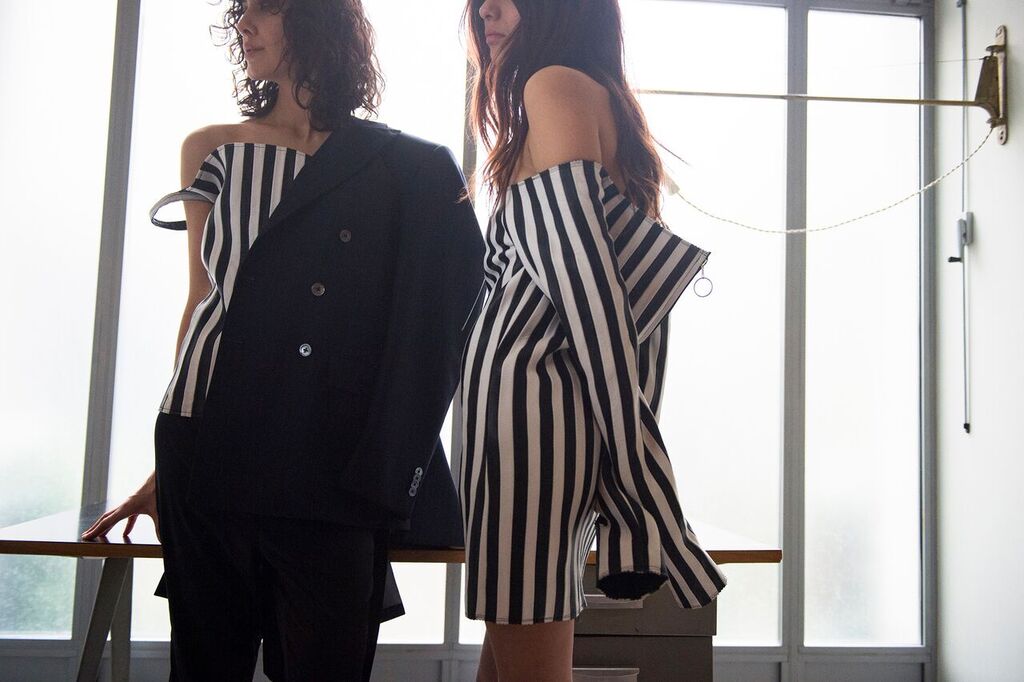
The full biker set in leather is brought back in red, grey and burnt orange with black and white leather panels. Talking about leather, it simply can not be forgotten to mention the black and white striped leather dress with cut-off shoulders. This definitely stood out as one of the strongest pieces and a mon Dieu favorite.
The collection is unisex, focusing on outerwear and shoes. In four centimeter high heels the male models exchanged jackets with the women during the presentation in Paris, a detail stating that these garments know no gender. Erasing the gender barriers has been a hot topic in the fashion industry for the last year, with roots in LGBT movements regarding marriage equality and acceptance of transsexuality. Where big international houses, such as Louis Vuitton, features men wearing women’s clothing in their campaign, it is quite welcoming to see these tendencies being picked up by our local designers in Norway where the general status quo is quite conservative.
With an eclectic feel, a great mix of materials and a new interesting take on Mardou & Dean’s identity, this is definitely Bredholdts strongest collection ever the way mon Dieu see it.
FFOLDS
Text Fredrik Austad Photos Maria Pasenau
The venue of FFOLDS by Oslo based designer Anne Karine Thorbjørnsen used to be an old laundromat on the Eastern side of Grunerløkka. The sunlight fills the room through big windows and illuminate garments and plastic sheets hanging from the ceiling. Placed on chairs, laying on the floor and wrapped around steel bars, her collection reminds us of a contemporary art exhibition.
Thorbjørnsen has a predilection for the art of draping and the indefinable. She graduated from Central Saint Martins in London in 2014 and this is her first year back in Norway. Earlier in March she had a presentation of her newest collection that she chose to show on street casted models of both genders. Thorbjørnsen is a womenswear designer but told us that she wanted to see if her design would work on the guys as well.
I have worked with the masculine suit and draping as a contrast between the hard and the soft, Anne Karine Thorbjørnsen explains for mon Dieu. The suit works as a power uniform: an object representing the role of a male leader. Playing this reference up against the softness and femininity of the ancient draping technique, we get an interesting outcome reflecting the masculine versus the feminine roles of today’s society.
The draping technique is often presented as very sublime: mostly seen in fine art. I wanted to put this in another context with fabrics representing another kind of beauty, Thorbjørnsen says pointing towards a pink dress hanging close to one of the windows. With its pink layers in low-cost material the item might come of as cheap and unattractive. The transformation is first seen when the sunbeams hits the fibres: making the dress shine like the threads are interpreted with small diamonds. In this way mon Dieu sees it as a nod towards a modern interpretation of high-cultur meeting low/popular culture as is seen a lot in fashion these days.
There were a lot of interesting pieces that caught our attention: a suit jacket tuned into a skirt with pleats and pockets and an outwear piece transformed from the inner lining of another tailored-made item. The feet of the models wore glitter splashed sandals and heels; Thorbjørnsen wanting us to imagine that they had just returned from running through a deep mud bank; a mud bank filled with glitter.


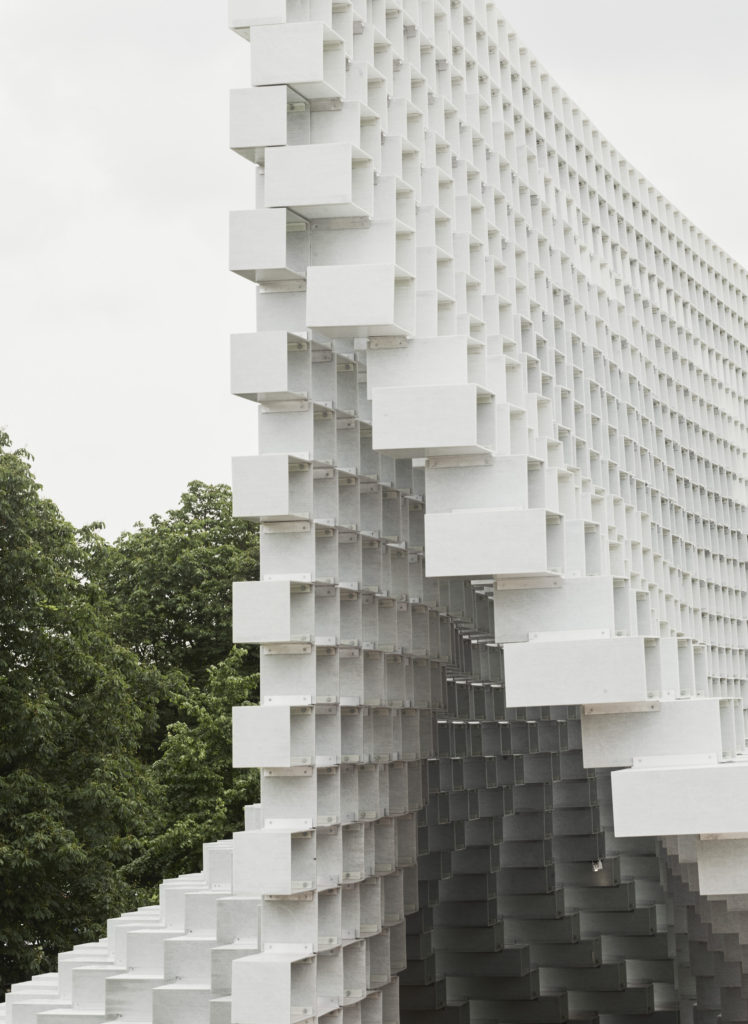
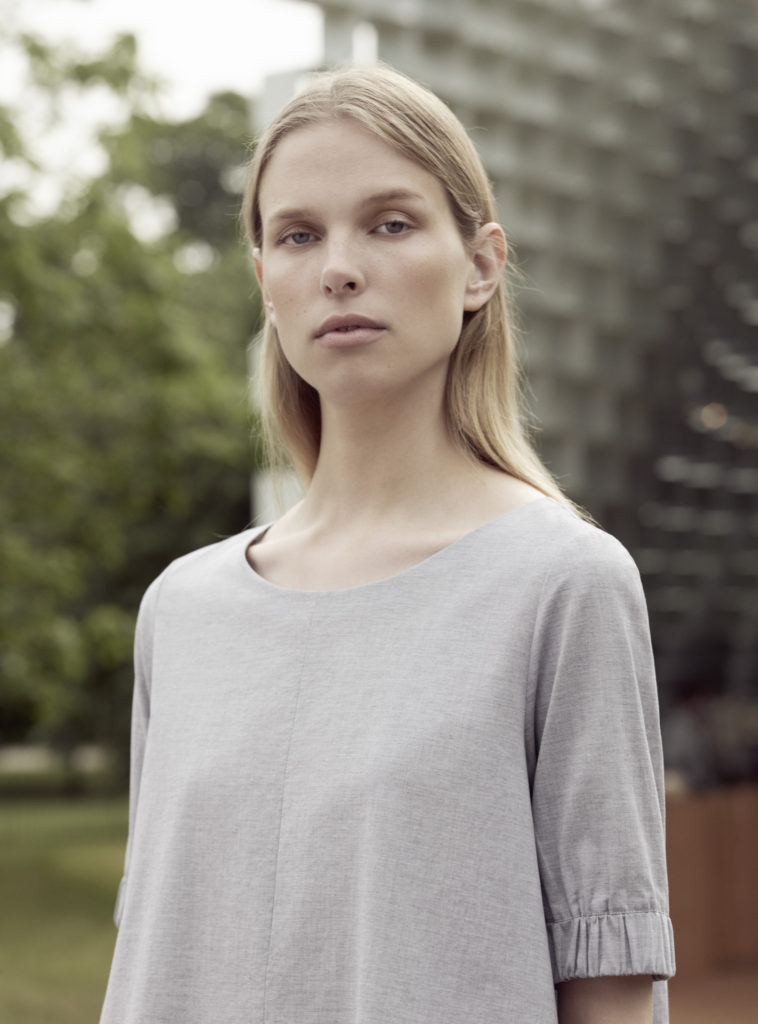
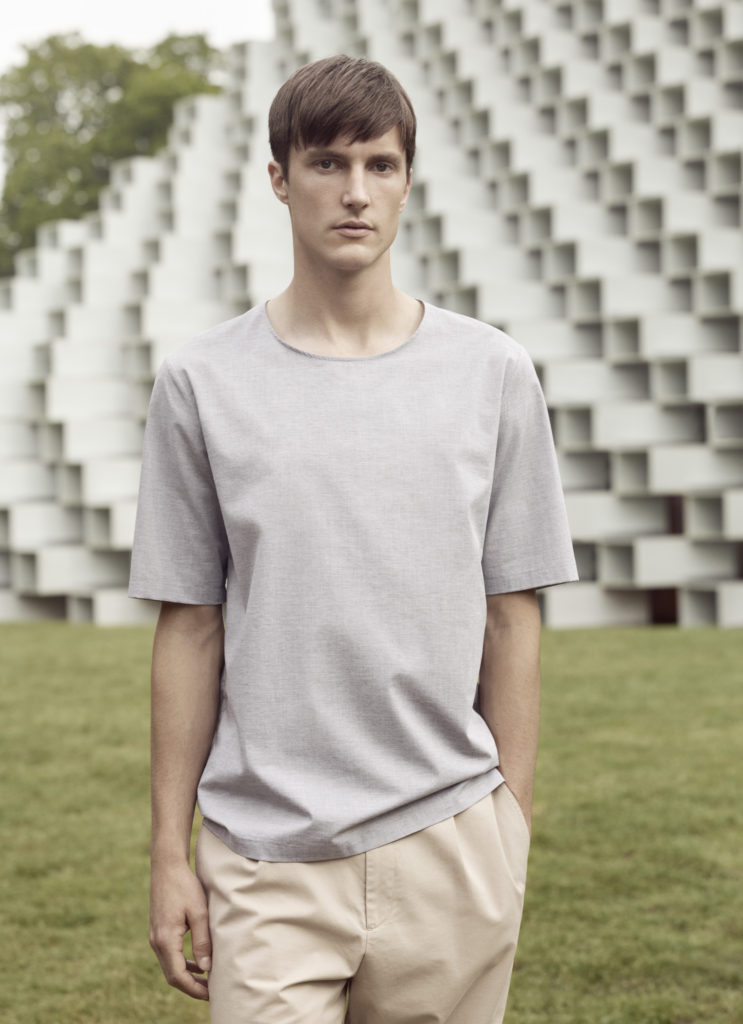
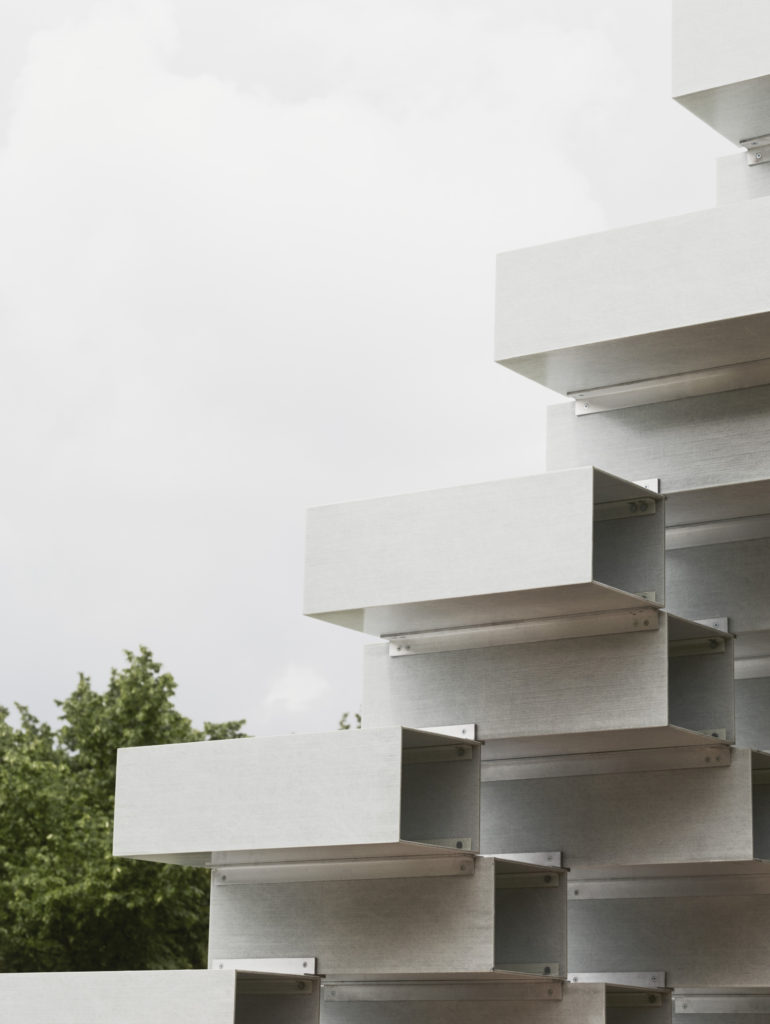
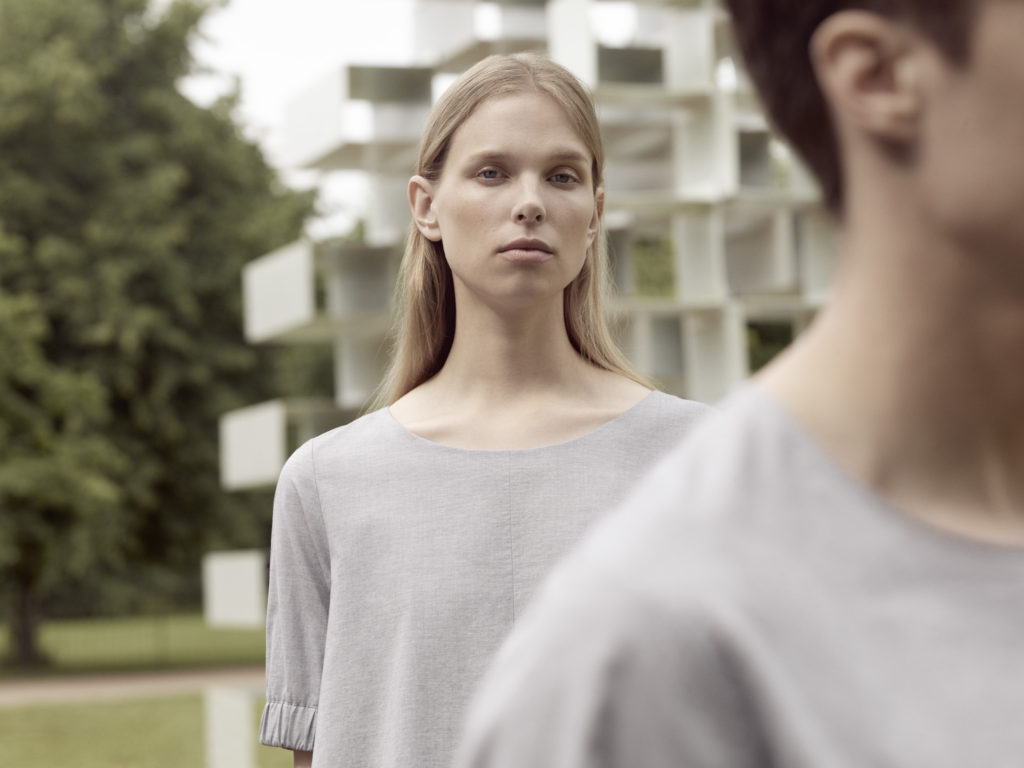
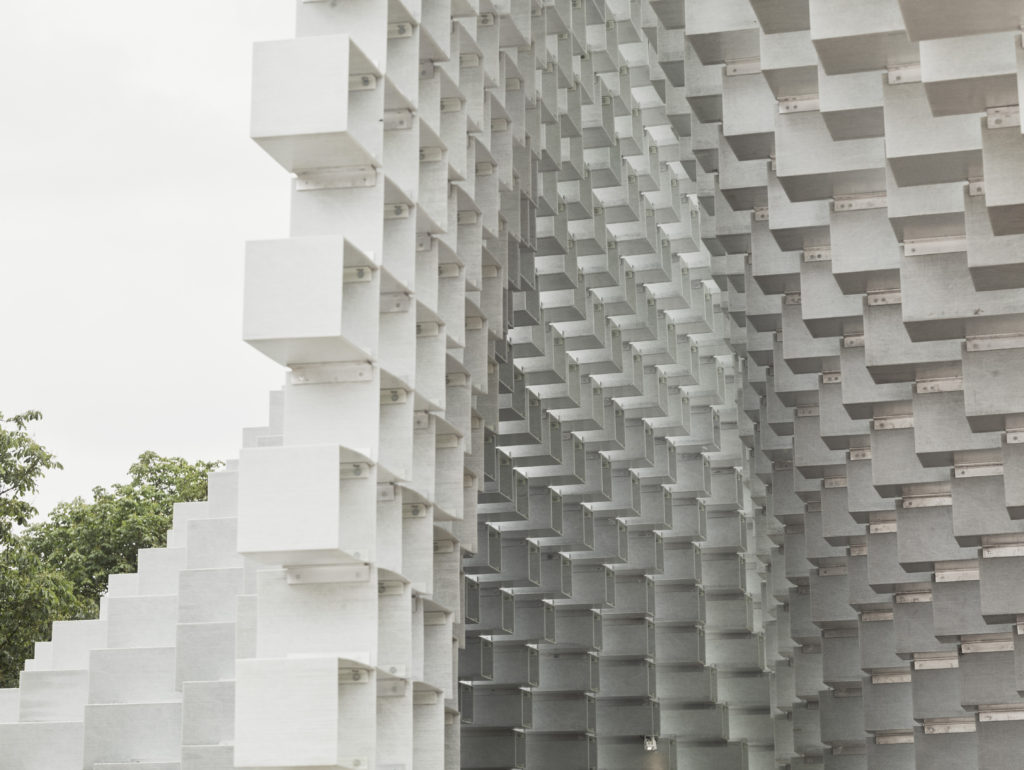
![COS x Sou Fujimoto3[2][1][2][1]](http://stories.mondieu.nu/wp-content/uploads/2016/04/COS-x-Sou-Fujimoto32121-1024x683.jpg)
![COS x Sou Fujimoto2[5][1][2][1]](http://stories.mondieu.nu/wp-content/uploads/2016/04/COS-x-Sou-Fujimoto25121-683x1024.jpg)
![COS x Sou Fujimoto1[7][1][3][1]](http://stories.mondieu.nu/wp-content/uploads/2016/04/COS-x-Sou-Fujimoto17131-1024x683.jpg)
